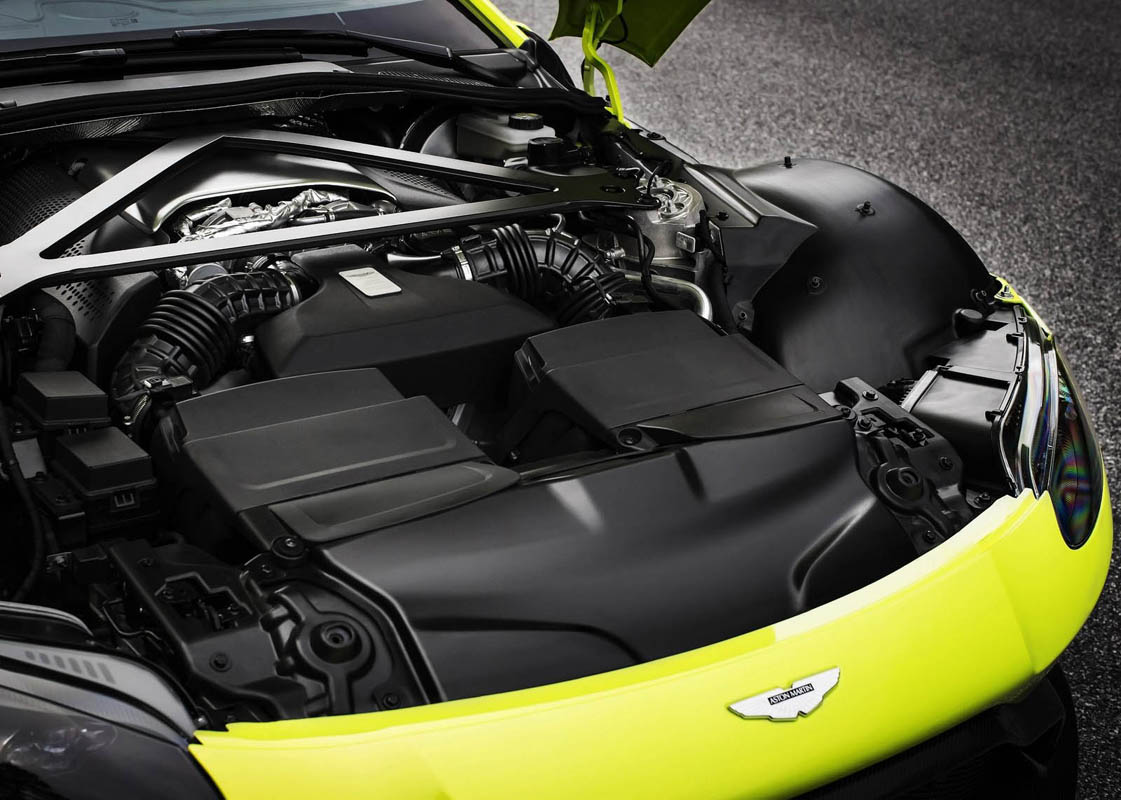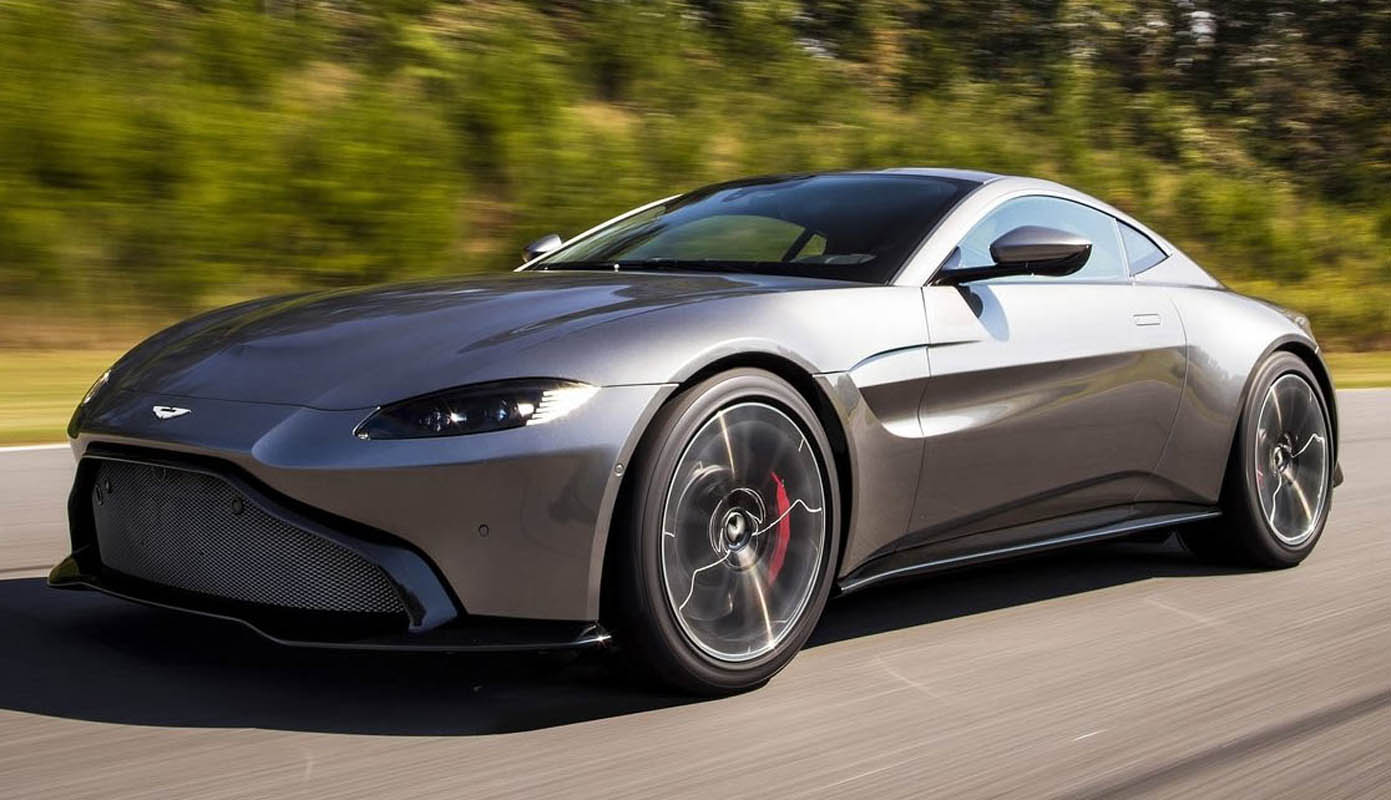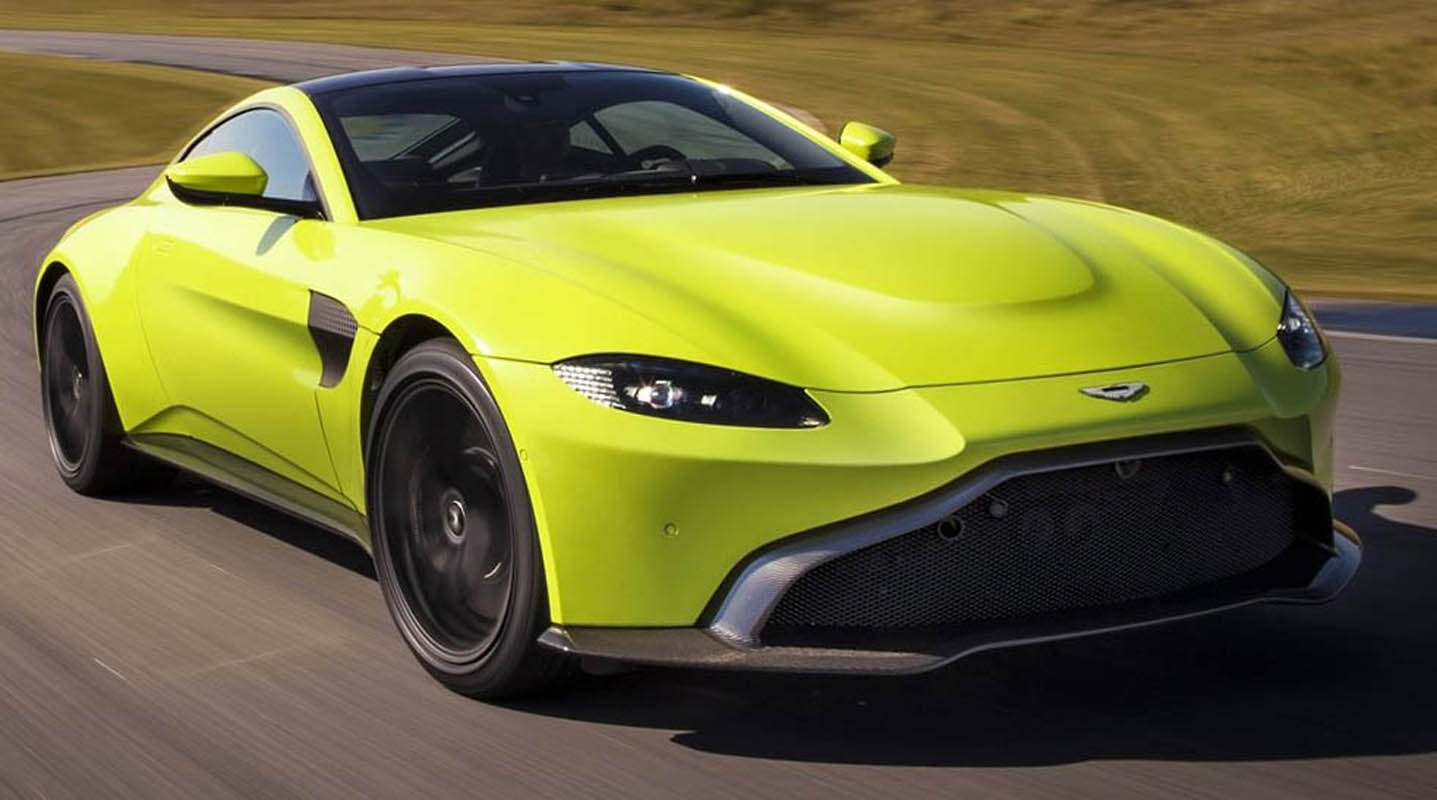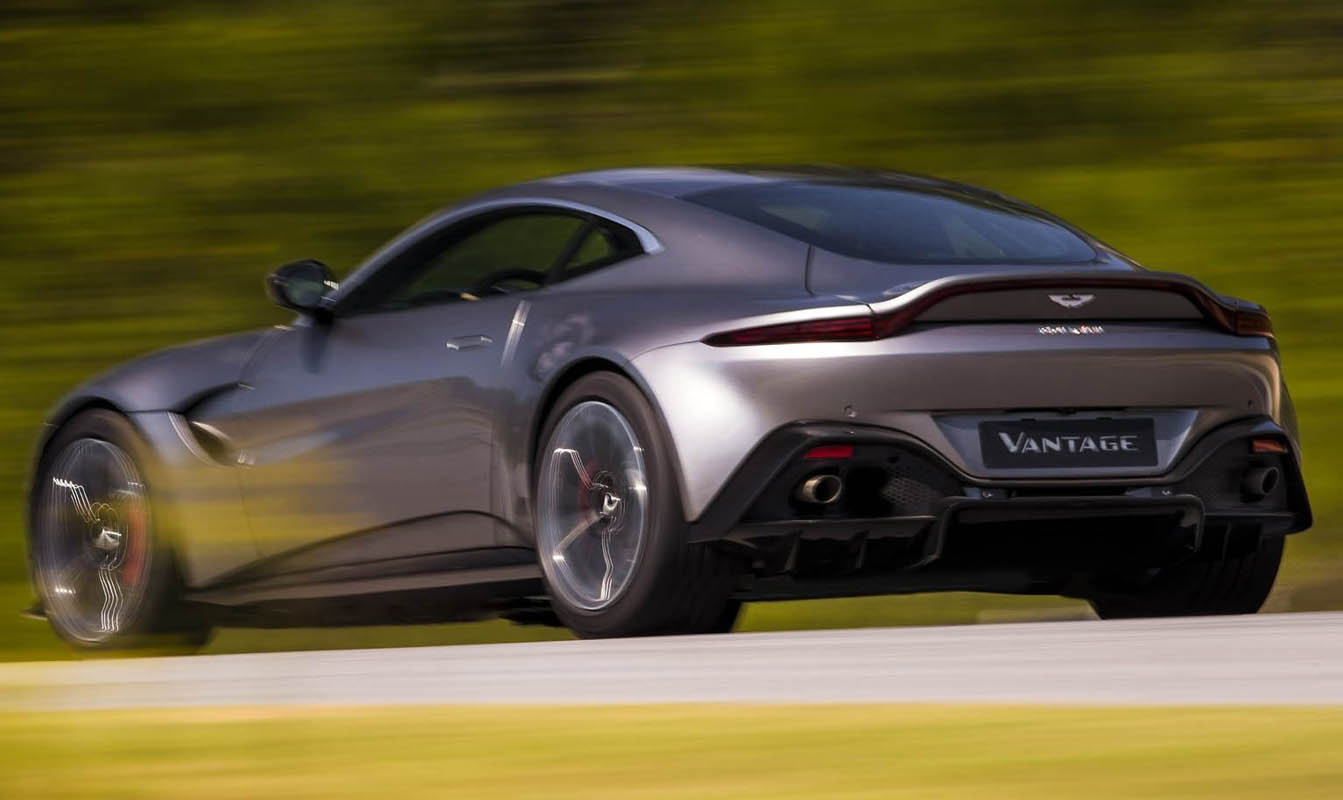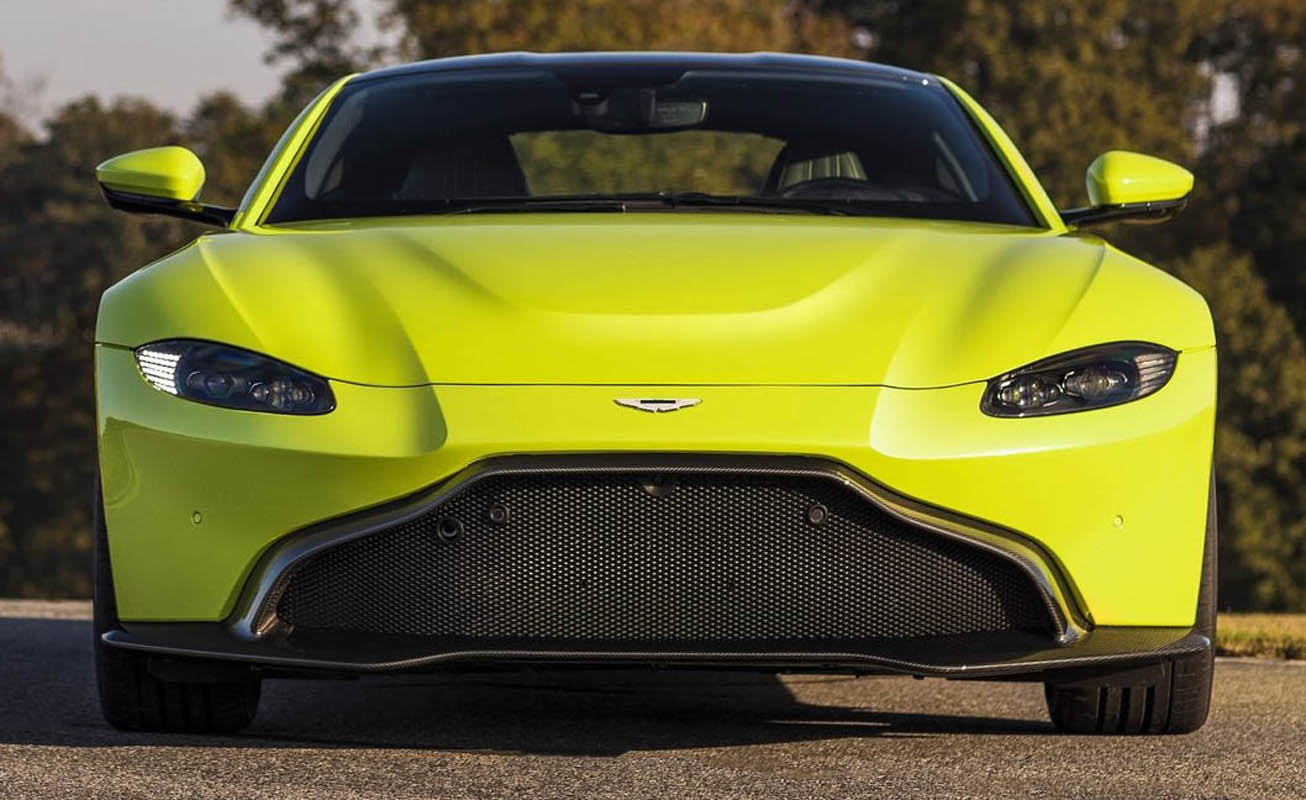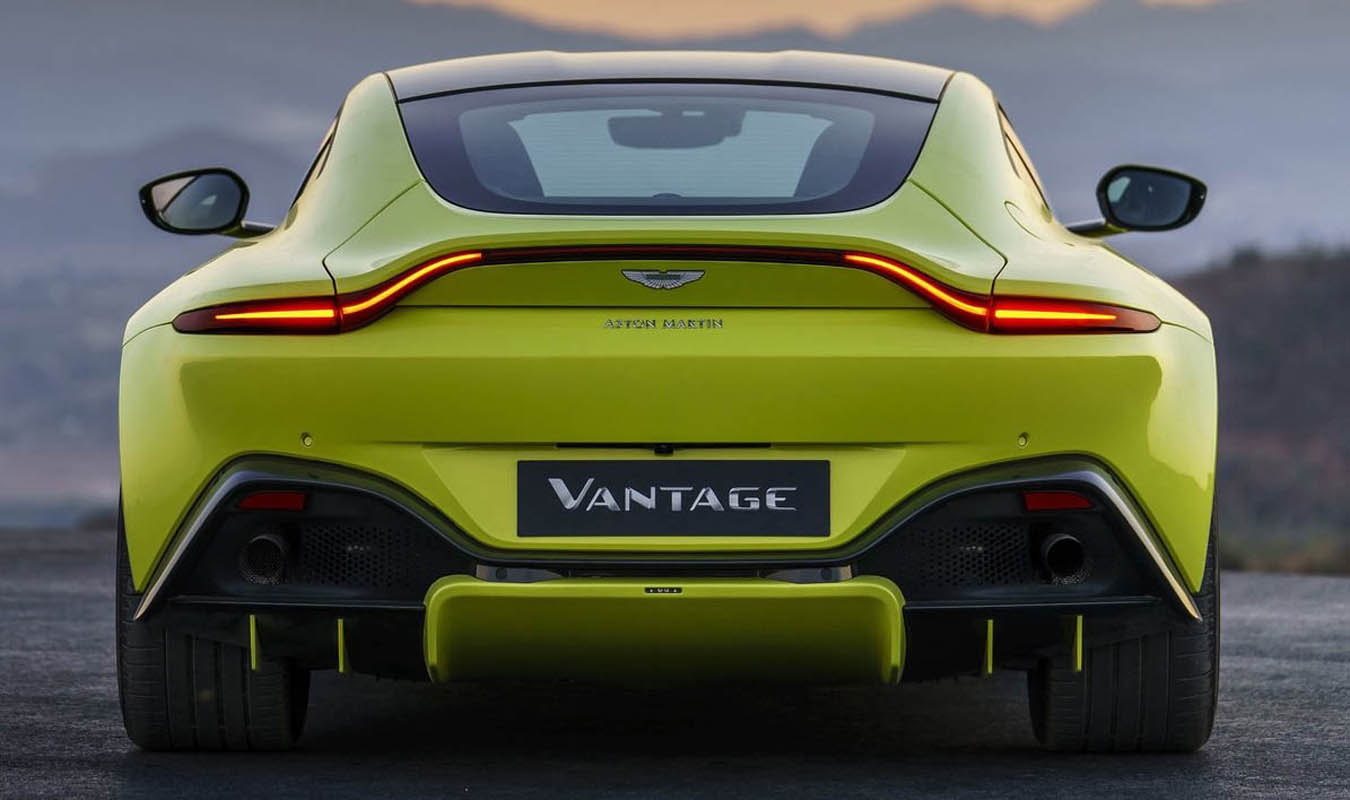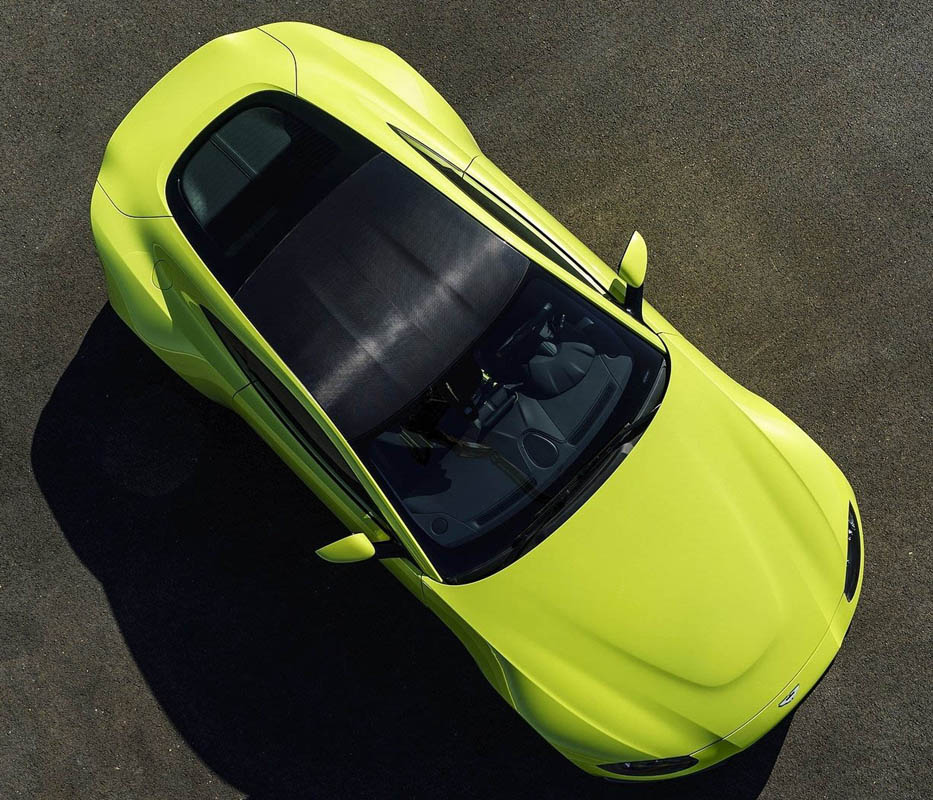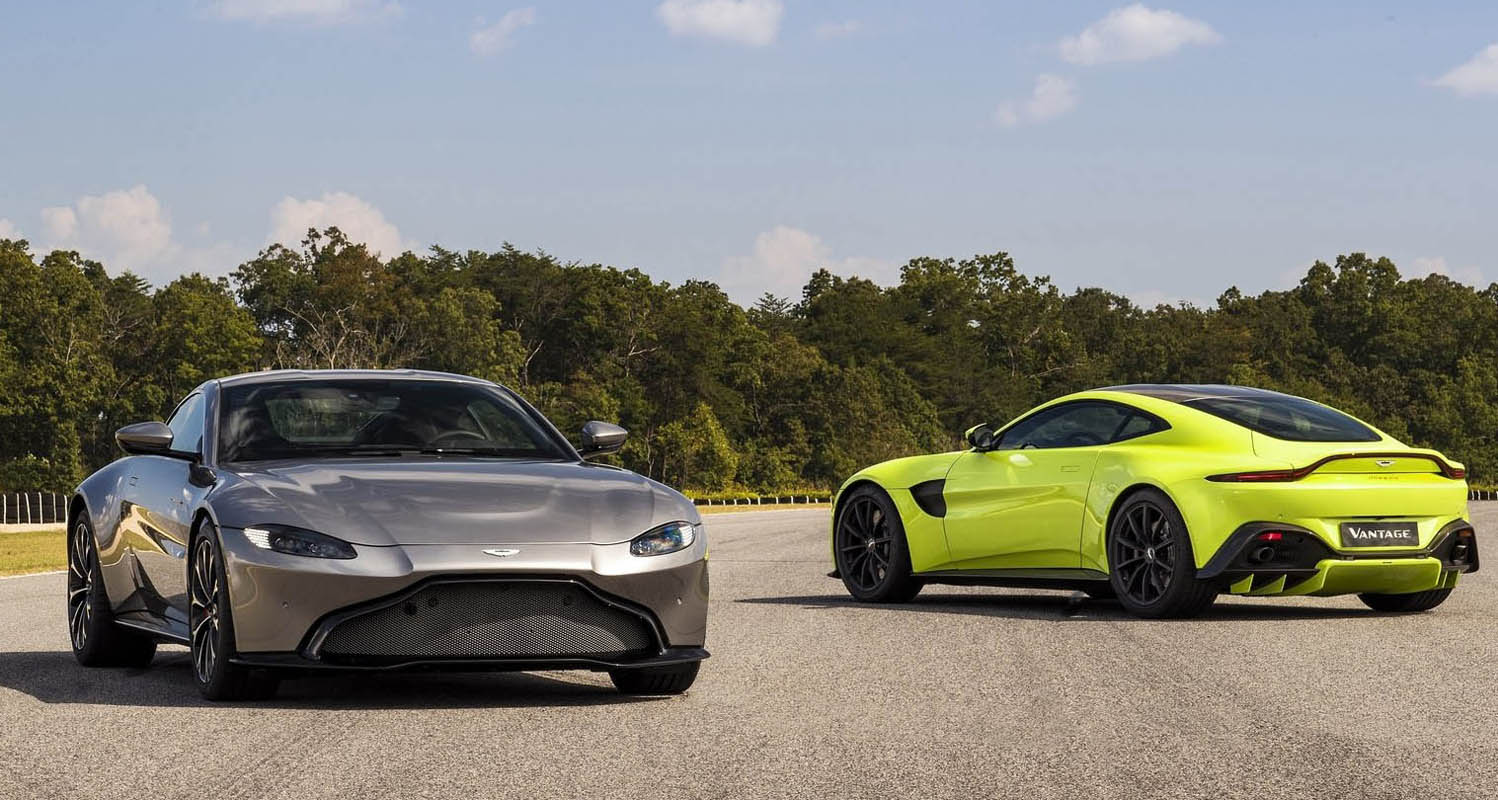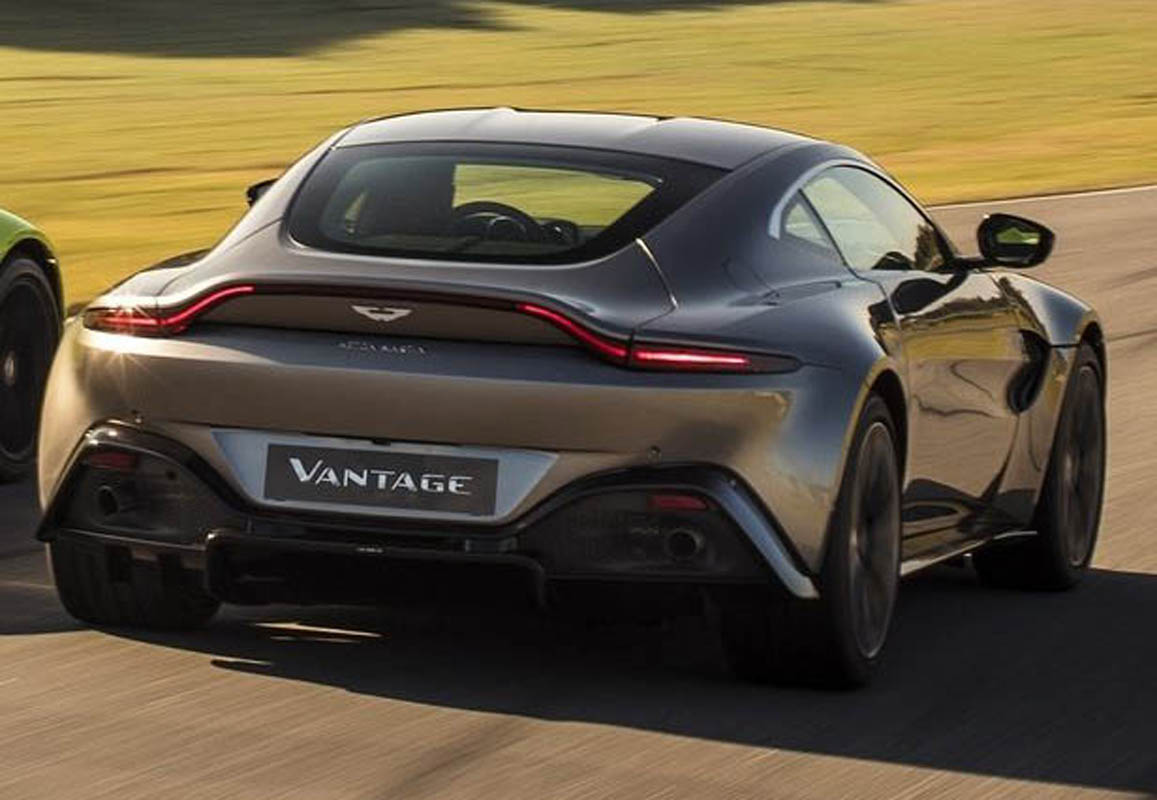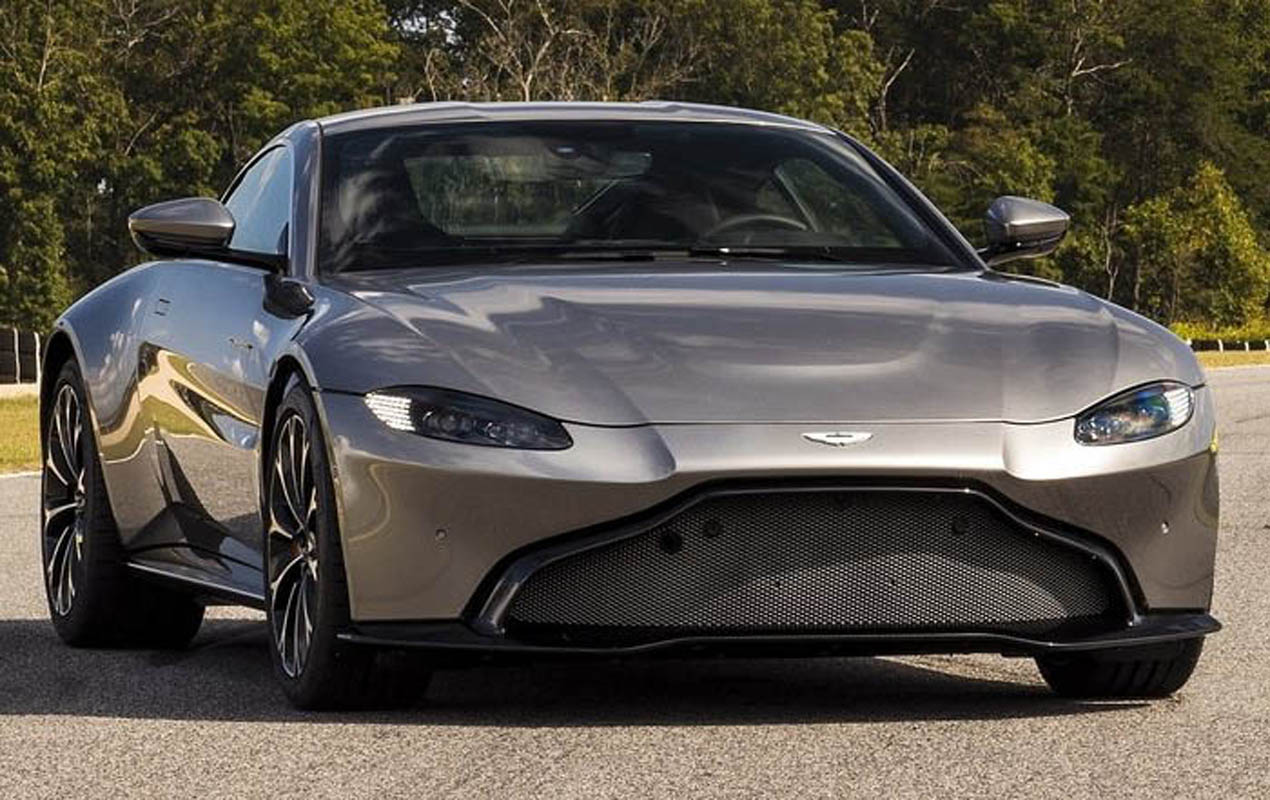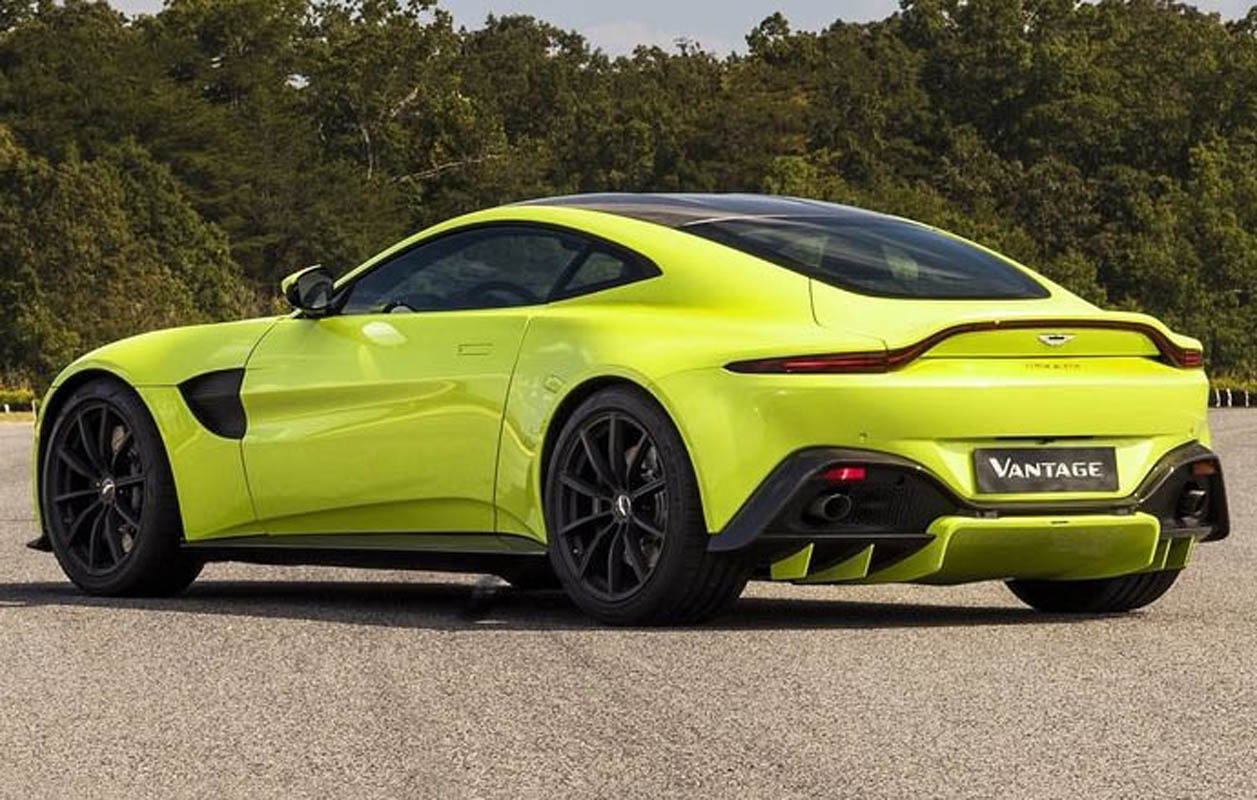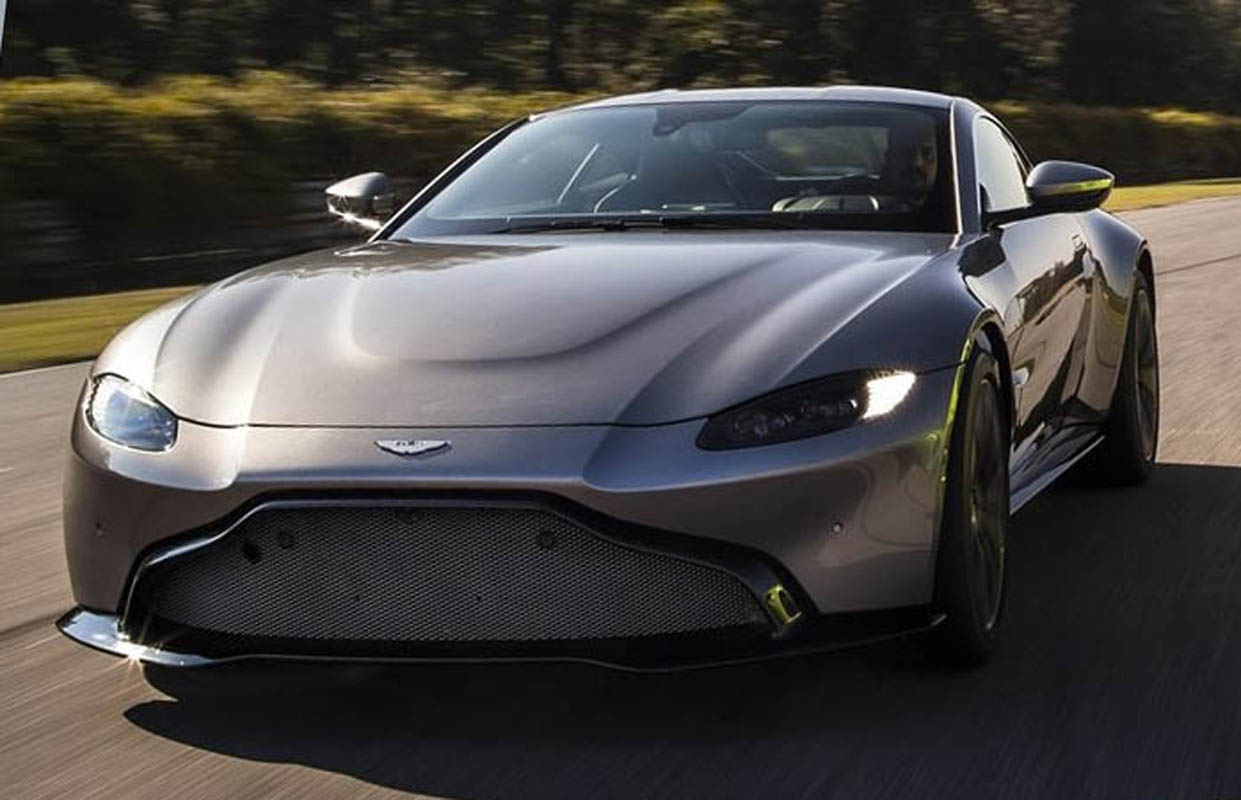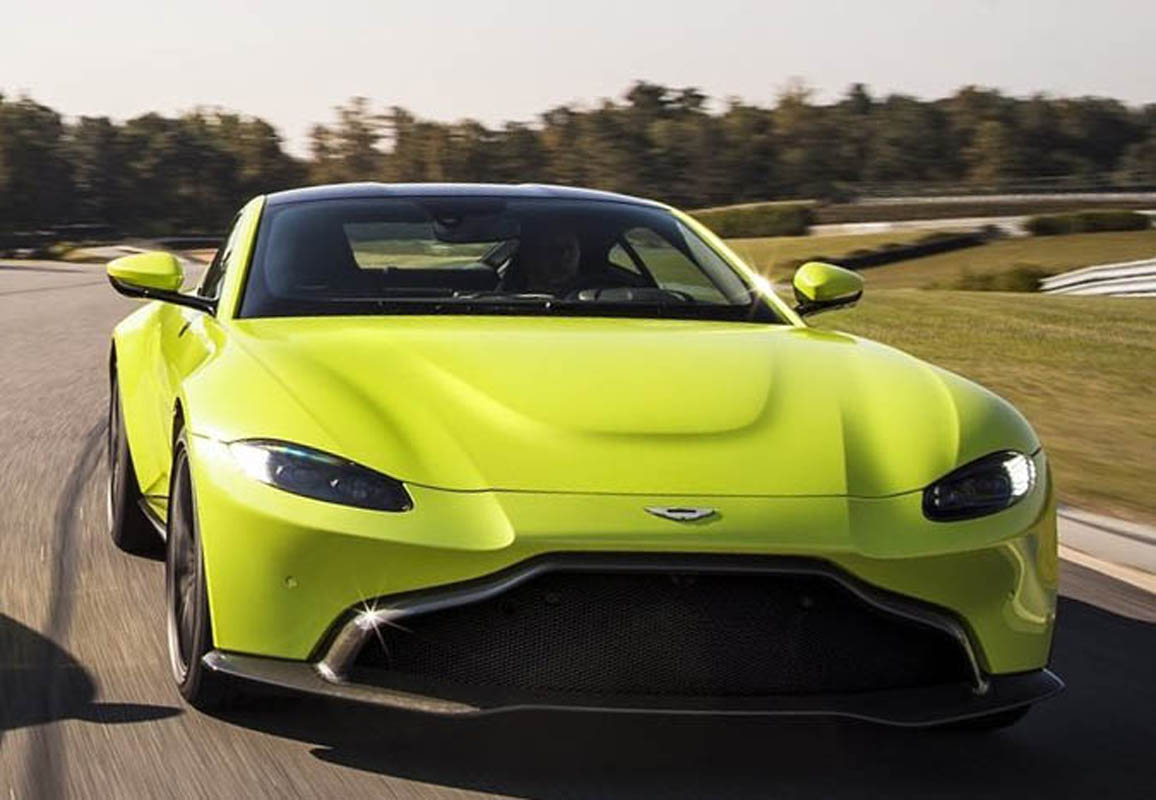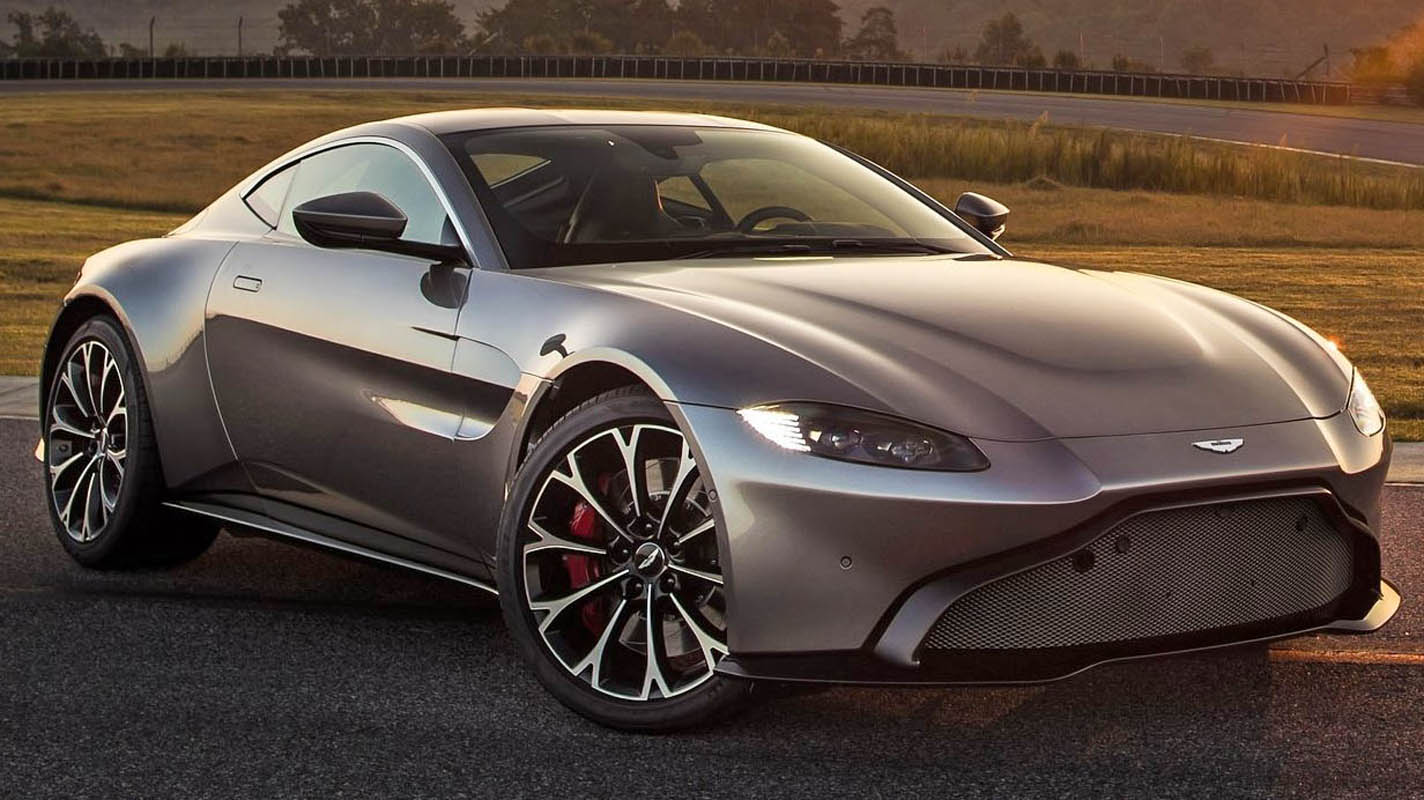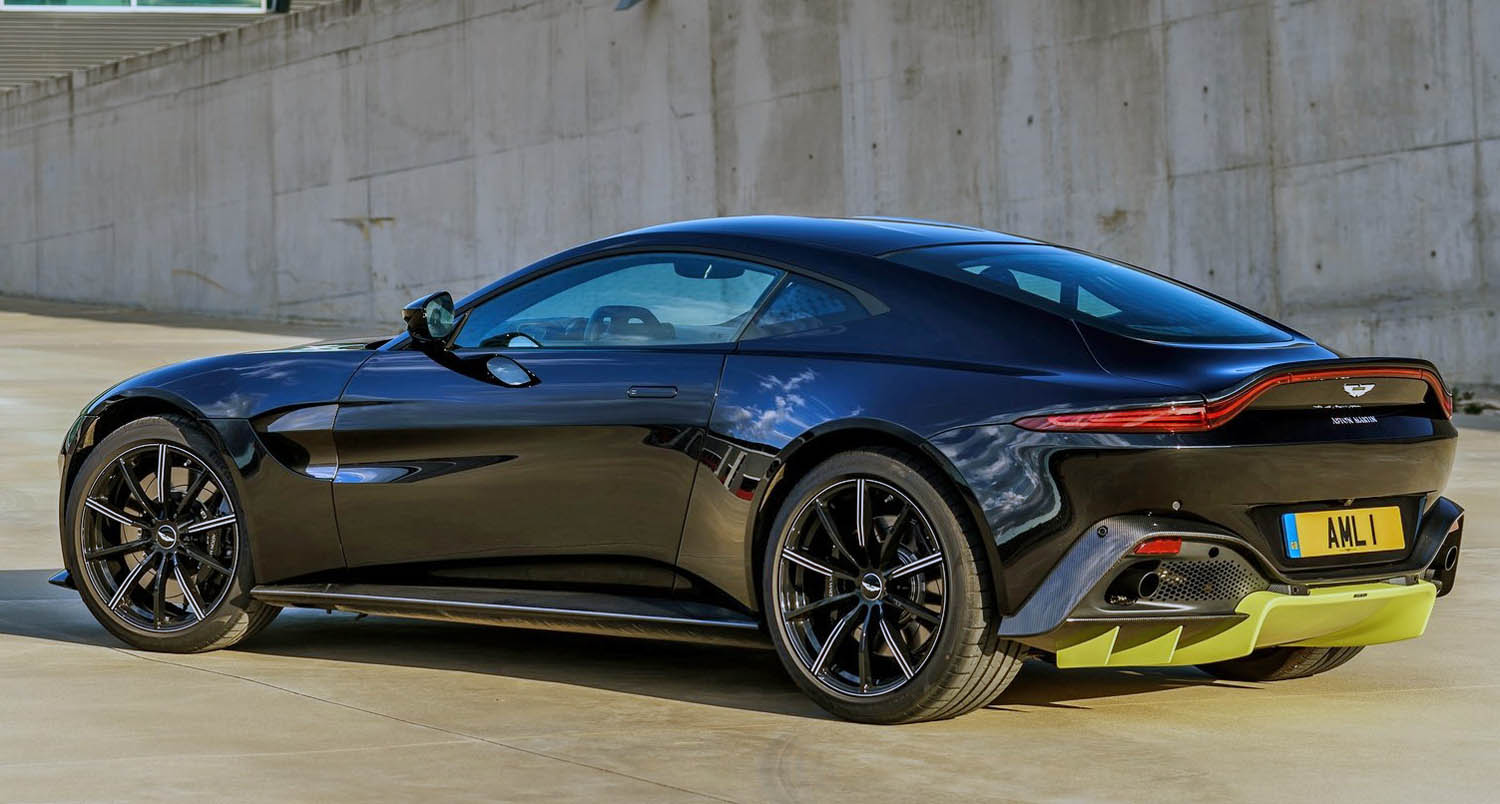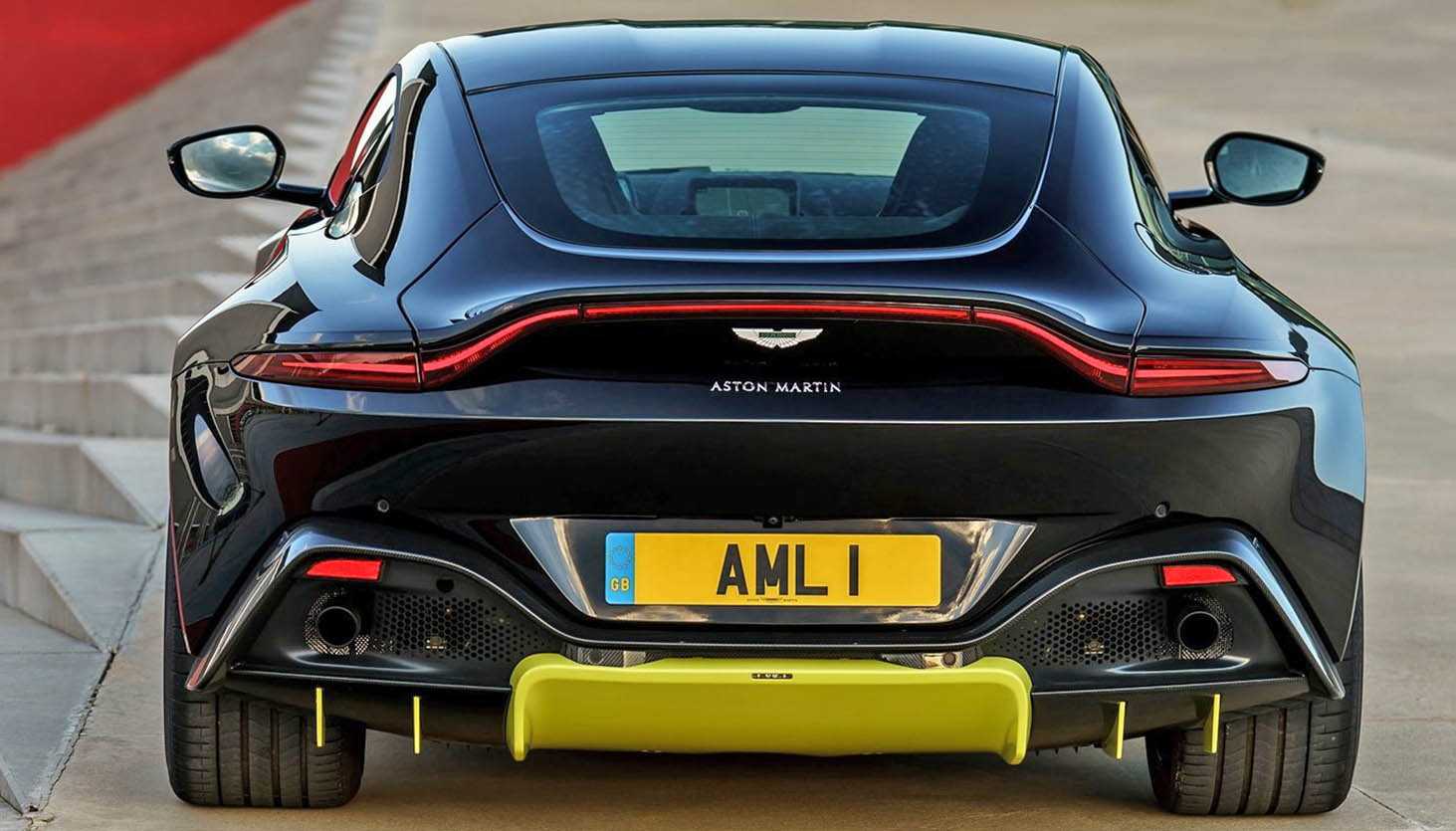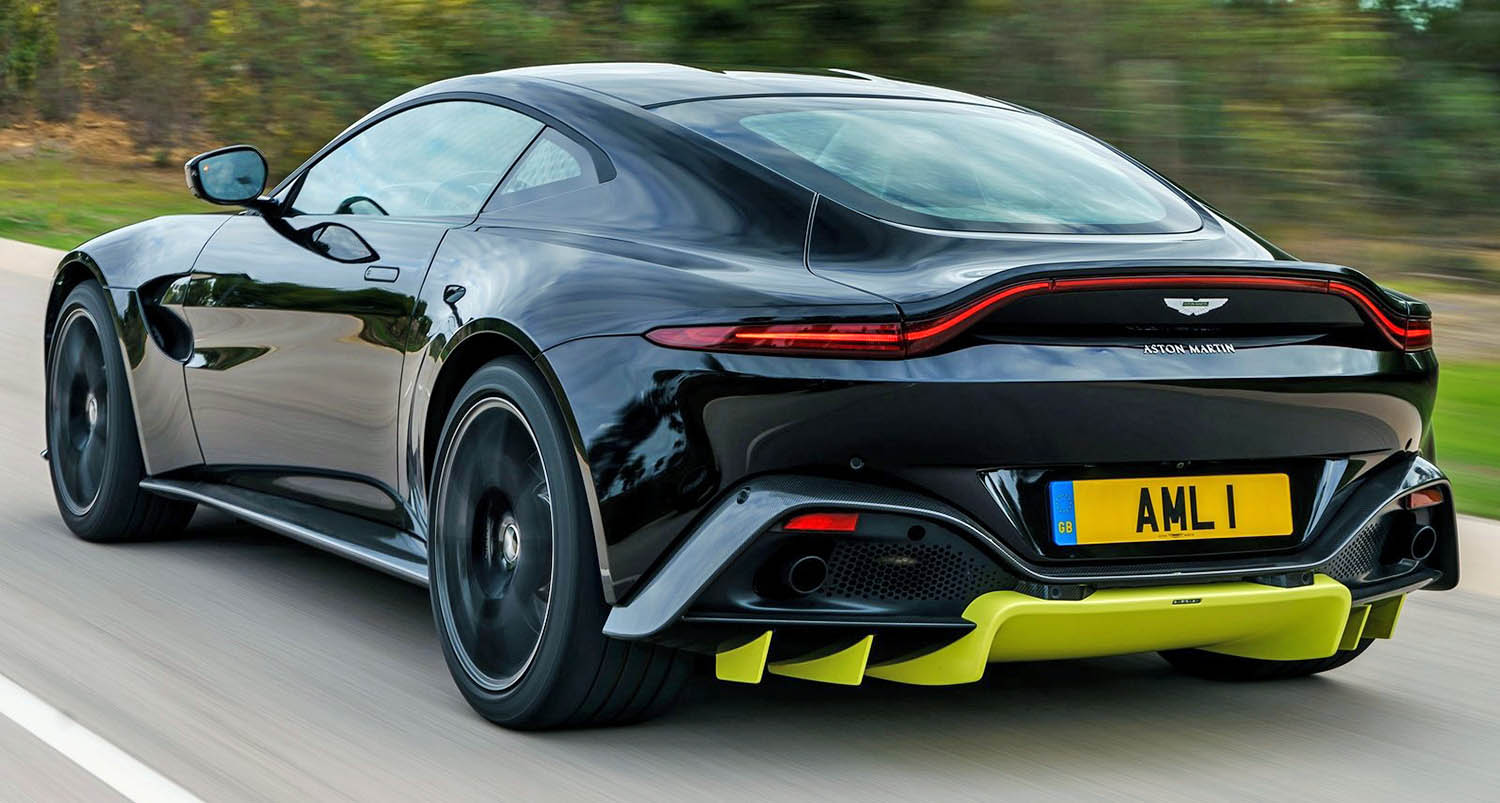
Vantage. An evocative name for a magnificent bloodline of thoroughbred sports cars. For seven decades the heartbeat of Aston Martin’s purest models, the Vantage nameplate has been worn by some true icons. First used in 1951 on a high-output engine option for the DB2, Vantage was quickly established as a model in its own right. Highlights include the William Towns-designed V8 Vantage, spectacular twin-supercharged V600 Le Mans and the much-loved V8 Vantage. Today this formidable sporting dynasty is poised to hit new s with the introduction of the new Aston Martin Vantage.
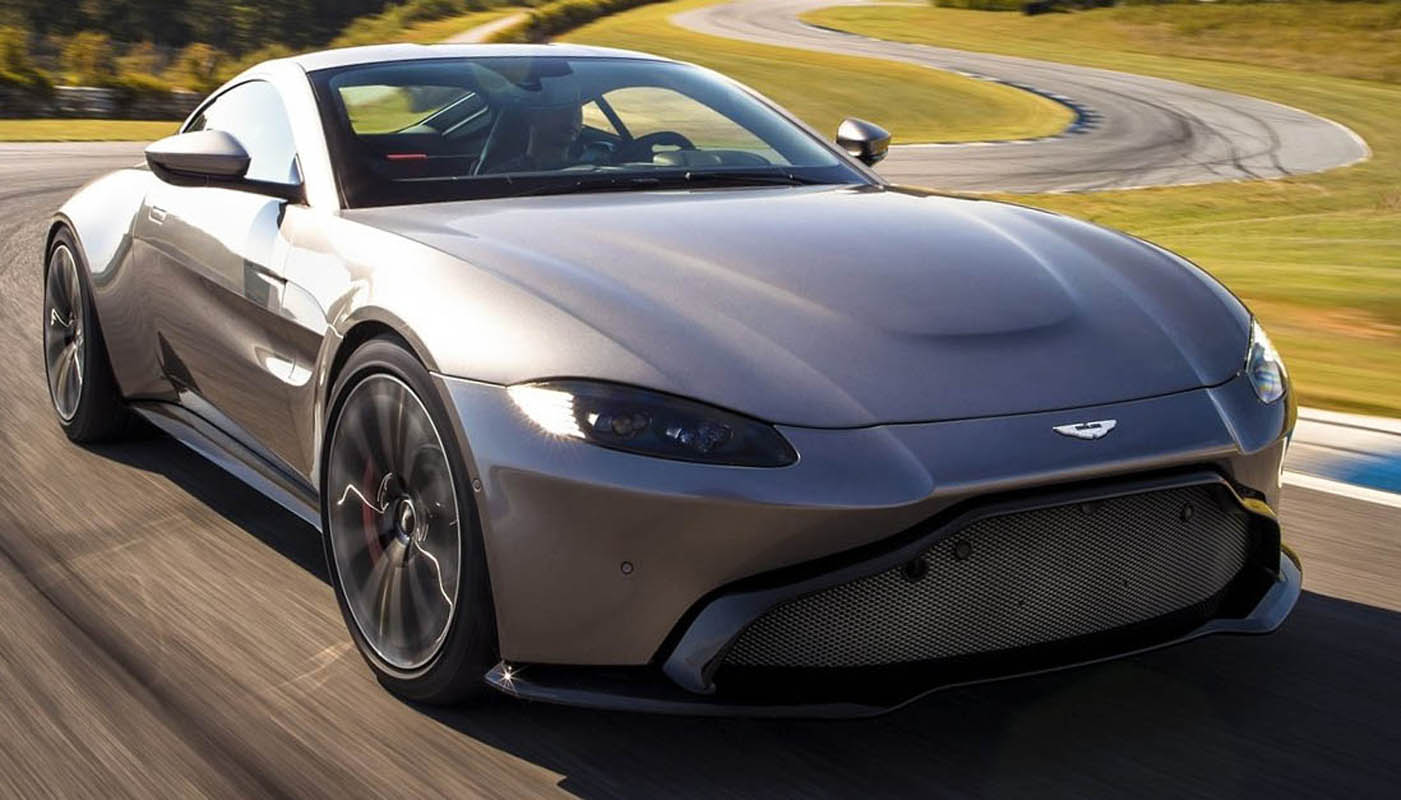
A spectacular new Aston Martin sports car demands a bold and distinctive design language. Pure, sculptural forms create an athletic, predatory stance, while the minimal front and rear overhangs, muscular flanks and broad haunches express the agility and dynamism inherent within the car. New head and tail lights form dramatic new signatures giving the Vantage unmistakable road presence and contribute to a strong and individual identity within the growing Aston Martin model range.
Aerodynamic performance was central to the Vantage design concept: the front splitter directs airflow underneath the car, where a system of fences channels cooling air where it is needed, and also ensures the rear diffuser is fed with clean airflow. The design of the diffuser creates an area of low pressure air, while simultaneously preventing turbulence generated by the rear wheels from disrupting the flow of air exiting centrally from beneath the rear of the car.

Together with the new side gills, which have been integrated into the body surface and bleed air pressure out from the front wheel arches, and the pronounced upswept rear deck lid, the Vantage generates a significant level of downforce – a rarity on any production car and a first for a core production Aston Martin model.
The design story continues inside the Vantage, with a dynamic and focused sports car cockpit that rejects long, fluid curves in favour of sharp, focused lines denoting the more aggressive nature of the car. A high waist interior theme and lower driving position creates a more immersive driving experience, and contributes to significant gains in occupant space and significant improvement in headroom compared with the outgoing Vantage. A combination of rotary and toggle style controls have been used for their tactile and intuitive functionality. Likewise, the PRND transmission buttons have been moved into a triangular formation so as to cluster major controls into clearly defined zones. The interior also offers generous stowage space, with useable room behind the seats and generous double-tier storage areas.
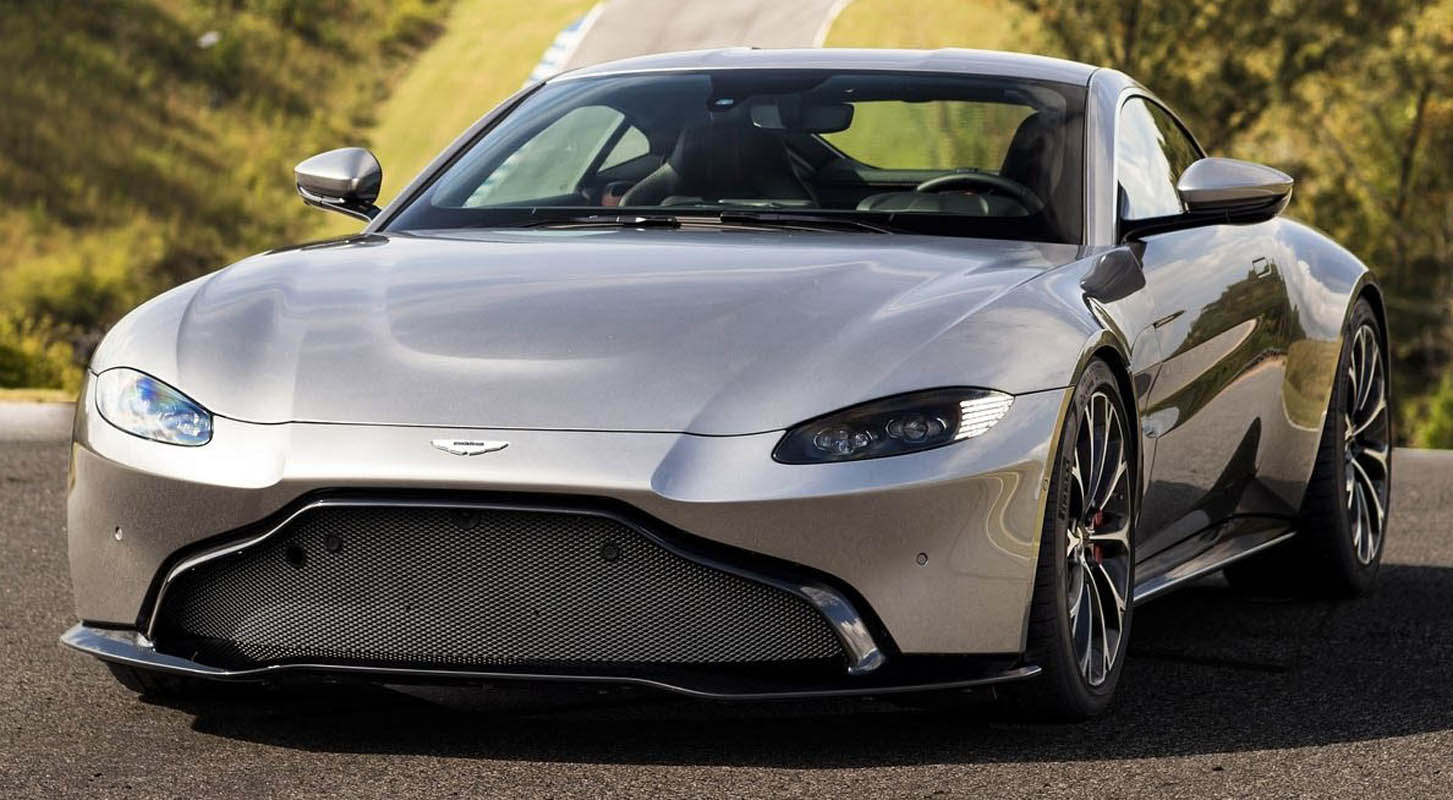
The heart of the Vantage is Aston Martin’s potent new alloy, 4-litre twin-turbo V8 engine. Set low and as far back in the chassis as possible for optimal centre-of-gravity and perfect 50:50 weight distribution, this high performance, high efficiency engine returns a CO2 figure of *245g/km yet develops 510PS at 6000rpm and 685Nm from 2000-5000rpm. With a dry weight of 1530kg this gives the Vantage formidable power-to-weight and torque-to-weight ratios – something vividly demonstrated whenever the throttle is squeezed. Detailed tuning of the induction, exhaust and engine management systems has given the Vantage a truly intoxicating character and soundtrack.
The Vantage deploys its impressive power and torque to the rear wheels via a rear-mounted ZF eight-speed automatic transmission. Capable of accelerating from 0 to 60mph in 3.5 seconds and on to a maximum speed of 195mph, it employs a sophisticated suite of integrated electronic systems to offer maximum control and driver enjoyment. These include Dynamic Stability Control and Dynamic Torque Vectoring. The speed-dependent electric power steering has 2.4 turns lock-to-lock for an outstanding combination of responsiveness and precise, intuitive control.

For the first time on an Aston Martin the new Vantage also features an Electronic Rear Differential (E-Diff). This differential is linked to the car’s electronic stability control system, so it can understand the car’s behaviour, and react accordingly to direct the engine’s power to the relevant wheel. Unlike a conventional LSD, it can go from fully open to 100% locked in a matter of milliseconds. At higher speeds, the Electronic Differential’s speed and sensitivity of response enables the system to take very fine control of the car’s dynamic behaviour. It makes the car feel much more composed both in terms of its straight-line stability and its cornering performance, providing the driver with increased levels of confidence to explore and enjoy the car’s capabilities to the full.
The chassis is an evolution of the latest generation bonded aluminium structure first seen on the DB11, though some 70 per cent of the structure’s components are new for Vantage. Balance, strength, rigidity and weight efficiency were all priorities in the new Vantage design, as was handling purity and consistency. Highlights of the chassis include a solidly mounted rear subframe for an enhanced feeling of direct connection for the driver, new Pirelli P Zero tyres developed specifically for new Aston Martin Vantage and the latest generation Adaptive Damping System which incorporates Skyhook technology and offers the choice of Sport, Sport Plus and Track modes.
Thanks to full integration of engine, transmission, E-Diff, Dynamic Torque Vectoring, Dynamic Stability Control, Adaptive Damping and the electric power steering systems, each mode optimises every area of the car as one. With each step the Vantage gains in agility and responsiveness, its character becoming progressively sharper, more vocal and more exciting. This is the essence of the Vantage driving experience – a car that’s never less than connected and engaging with the breadth of capability to revel in challenging roads and bare its teeth on track.
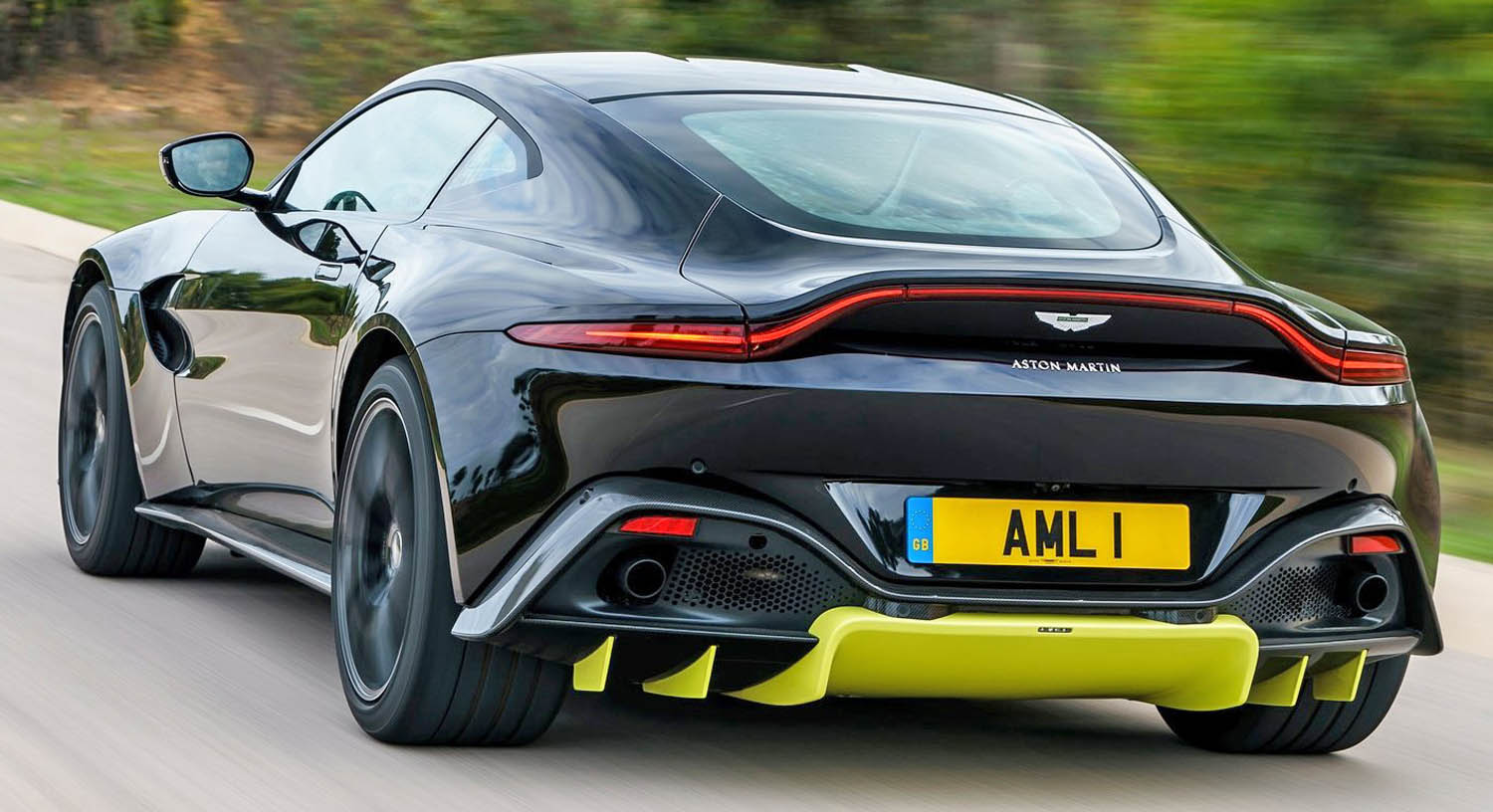
The Vantage features a high level of standard equipment, including keyless start/stop, tyre pressure monitoring system, parking distance display, park assist and front and rear parking sensors. The In-Car Entertainment system – controlled and viewed via a centrally mounted 8″ LCD screen – comprises of the Aston Martin Audio System, Bluetooth® audio and phone streaming, iPod®, iPhone® and USB playback and an integrated satellite navigation system.
Being an Aston Martin, the new Vantage also features a high level of craftsmanship, evidenced by flawless paintwork, luxurious Alcantara® and leather upholstery and the levels of finish optimised through the use of tactile natural materials of the highest quality. There is also extensive scope for personalisation via a generous choice of options. These include forged alloy wheels in a variety of finishes, Sports Plus Collection (comprising Sports Plus seats and Sports steering wheel), carbon fibre interior and exterior detailing and a Premium Audio System.
Aston Martin President Chief Executive Officer, Dr Andy Palmer said: “It speaks volumes for the outgoing Vantage that it is the single most successful model in Aston Martin’s history. Creating a worthy successor has been a challenge to relish and a huge source of motivation. I’m enormously excited by what we’ve created: a new Aston Martin Vantage that’s more explicit in looks and intent, wrapping heart-pounding performance and dazzling dynamics into an everyday usable package. A true sports car with a sharper look and a keener dynamic edge, the new Vantage is the Aston Martin pure driving machine enthusiasts have been waiting for.”
The new Aston Martin Vantage is on sale now with a recommended retail price from £120,900 in the UK, €154,000 in Germany and $149,995 in the USA. Deliveries are scheduled to begin during the second quarter of 2018.
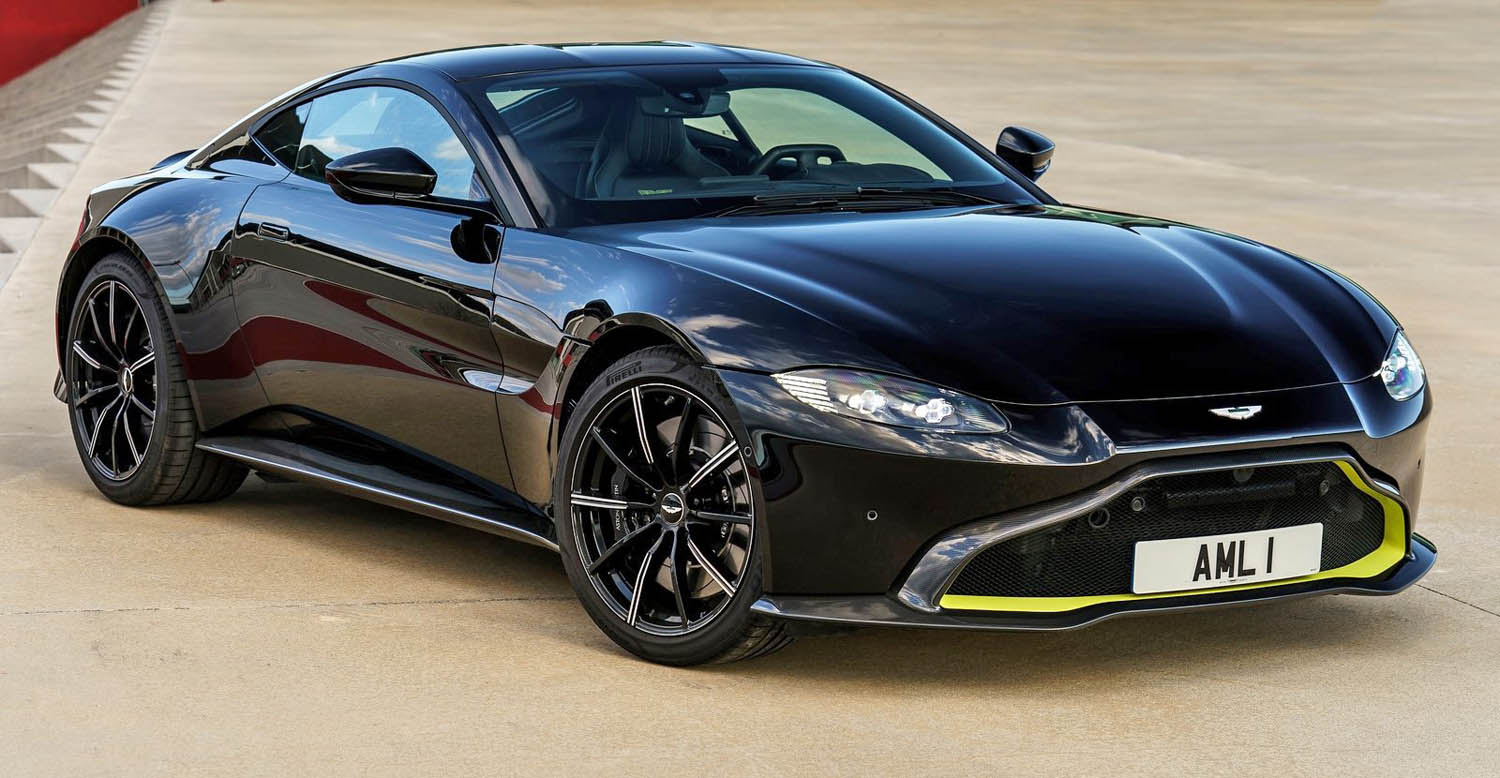
Design
Reflecting its increased performance, capabilities and sporting character, the new Aston Martin Vantage boasts an athletic, muscular physique. Driven by the desire to more explicitly express the clear nature of each Aston Martin model, the Vantage has a predatory stance that roots it emphatically to the road. Shaped by a philosophy of consequential lines, the body has purity, elegance and balance, each line present because it serves a purpose. This creates a clear message of sporting intent without having to resort to gimmicks.
This direct link to performance can be seen in the functional aerodynamics of the body surfaces. A fully integrated front splitter flows seamlessly into the minimal front overhang. The side strake has been stripped back into a new side gill so that it too is now an integrated surface, rather than an applied detail. It also serves an aerodynamic purpose, bleeding air from the front wheel arch to minimise lift and feed air along the flanks of the car.
The front and rear lights are ultra-slim LEDs and have been used to stunning effect. Whether you’re following or being followed these visual signatures ensure the Vantage is unmistakable. Shape and drama define every aspect of the Vantage, never more so than at the rear, where the diffuser and pronounced kick in the upswept deck lid clearly show how the Vantage uses the airflow over its surfaces to generate stability-enhancing downforce. Bold, less restrained and more celebratory, the Vantage is a brilliantly expressive and exciting piece of design.
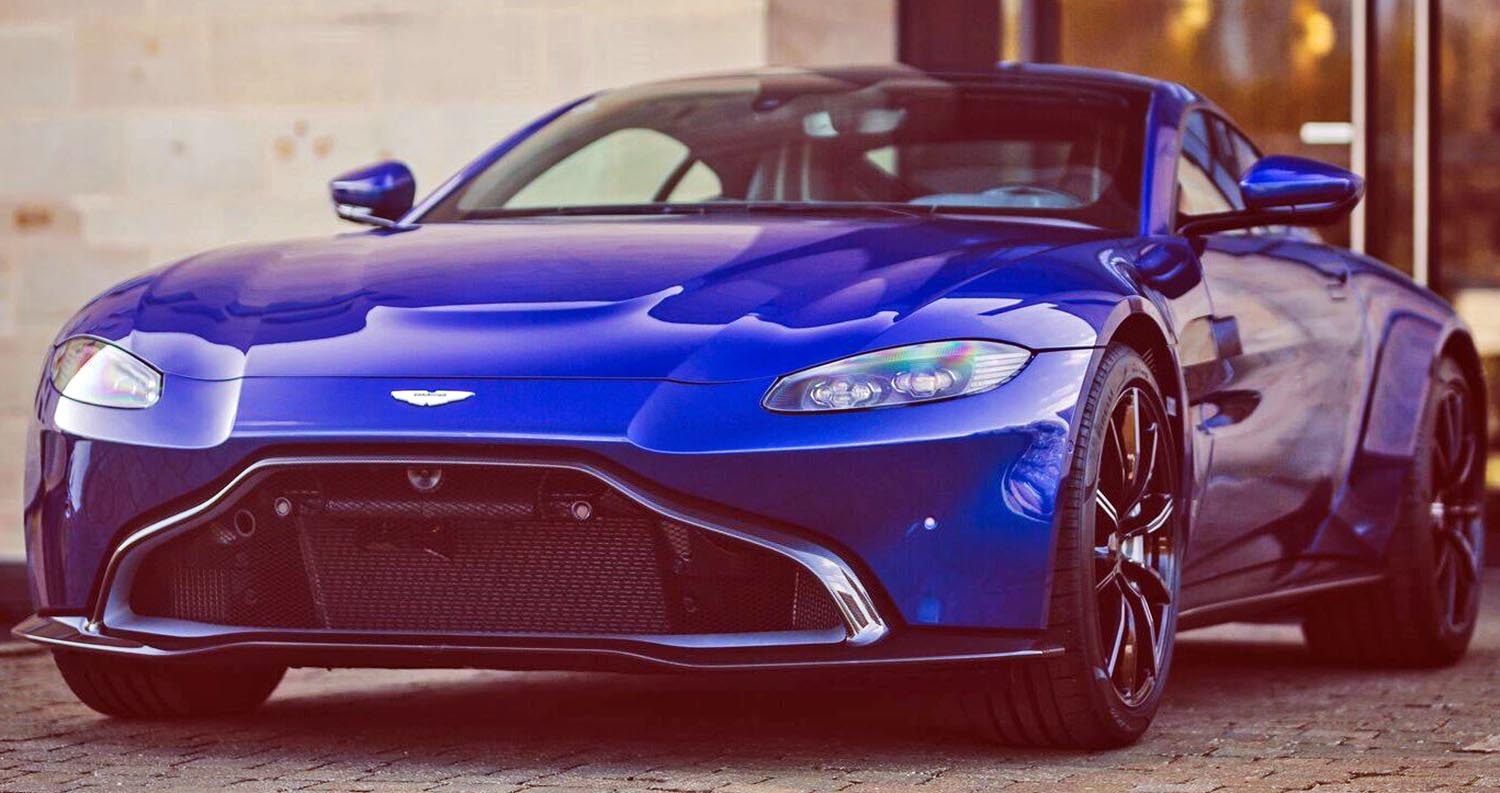
The interior is every bit as dynamic: a true and purposeful sports car interior that is a departure from the flowing lines and central waterfall console that has previously defined Aston Martin interiors. Instead the Vantage cockpit is dominated by a compact, focused console that shrink wraps the technical architecture – that’s to say the areas of switchgear, such as the new PRND transmission switches, which are now positioned in a triangular formation. The instrument cowl has protruding forms that act like blinkers to focus the driver’s gaze. The seating position is 10mm lower to foster a truly immersive feel. A choice of Sport and Sport Plus seats offer exceptional comfort, with the more heavily bolstered option seat providing greater support in dynamic situations.
Careful attention has been paid to the fixed paddle shifters, which have been developed to facilitate up and downshifts without the driver having to reposition their hands on the steering wheel. The shift feel itself has also been honed for a satisfyingly positive feel. The HVAC controls are a combination of classic rotary and toggle style switches, as they are the quickest and most intuitive means of adjusting temperature and airflow while on the move. These apparently small details all reinforce the pure, analogue, tactile nature of the Vantage driving experience.
As standard, the Vantage is trimmed extensively with Alcantara and leather (a full-leather interior is available as an option) which perfectly suits the sporting nature of the car, while beautifully executed details, such as the saddle leather door pull provide the perfect reminder of Aston Martin’s unrivalled commitment to craftsmanship. Though a strict two-seater, the Vantage is a genuine everyday proposition. A practical tailgate opens onto a 350-litre boot space. In the main passenger compartment, there are generous double-tier storage areas behind the seats, which are perfect for stowing handbags, briefcases or items of clothing while travelling.
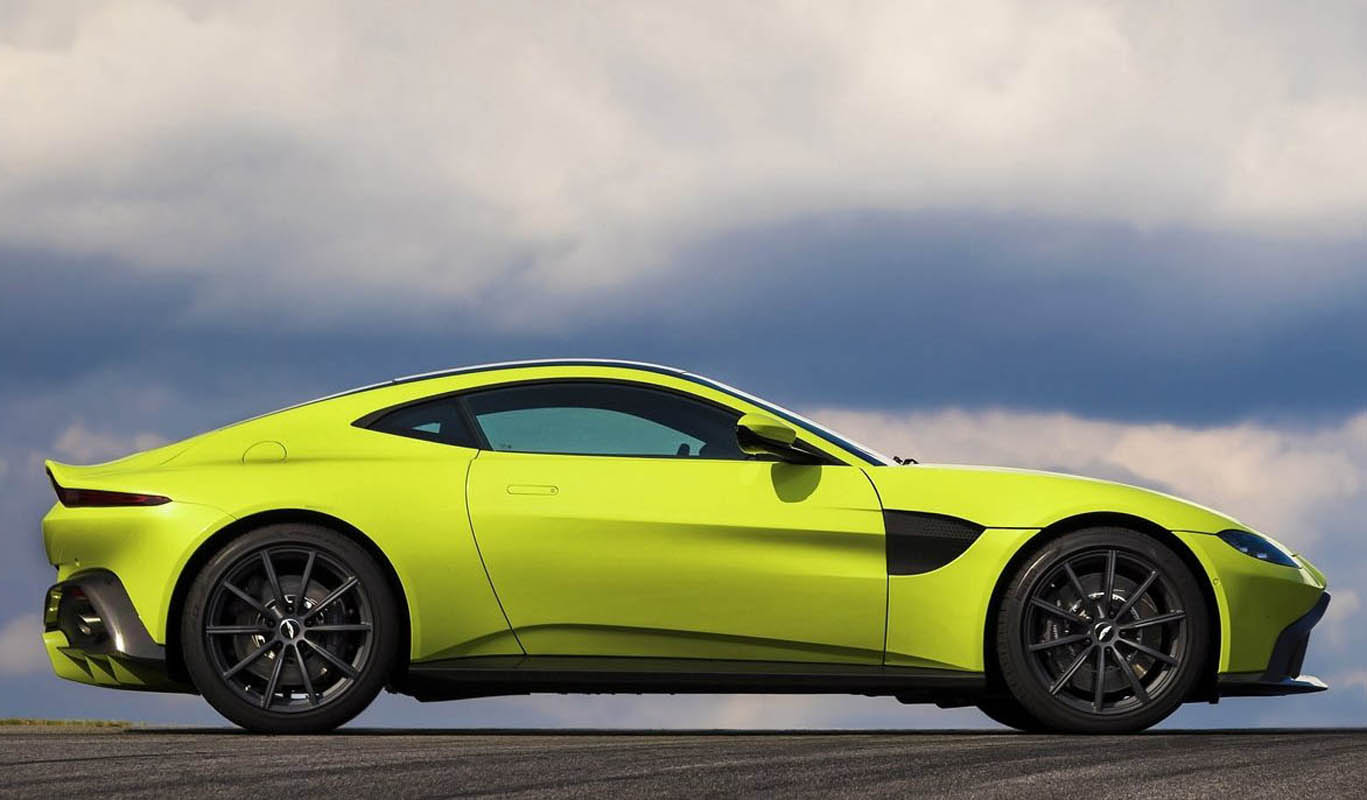
Chief Creative Officer, Marek Reichman said: “New Vantage has the most powerful and provocative design language ever seen in a Vantage. A hunter, light in weight and is therefore light in it’s visual language. It is based on a single line under tension, inspired by the DB10 and the extreme track-only Aston Martin Vulcan, blending the two unique design languages together into a form that is sculpted, dynamic, pure and elemental”.
Engineering/Powertrain
The backbone of the new Vantage is its bonded aluminium underframe. While the architecture of the car is based on Aston Martin’s next generation platform, 70% of its components are bespoke to the Vantage as it was essential the engineering team had the freedom to create the ideal foundation for a sports car. The result is an impressive dry weight of 1,530kg.
At 4465mm, the car is 284mm shorter than DB11, and is 34mm shorter than a Porsche 911. This compactness helps give the car its inherent agility – something for which the outgoing Vantage was renowned and on which this new model raises the bar.
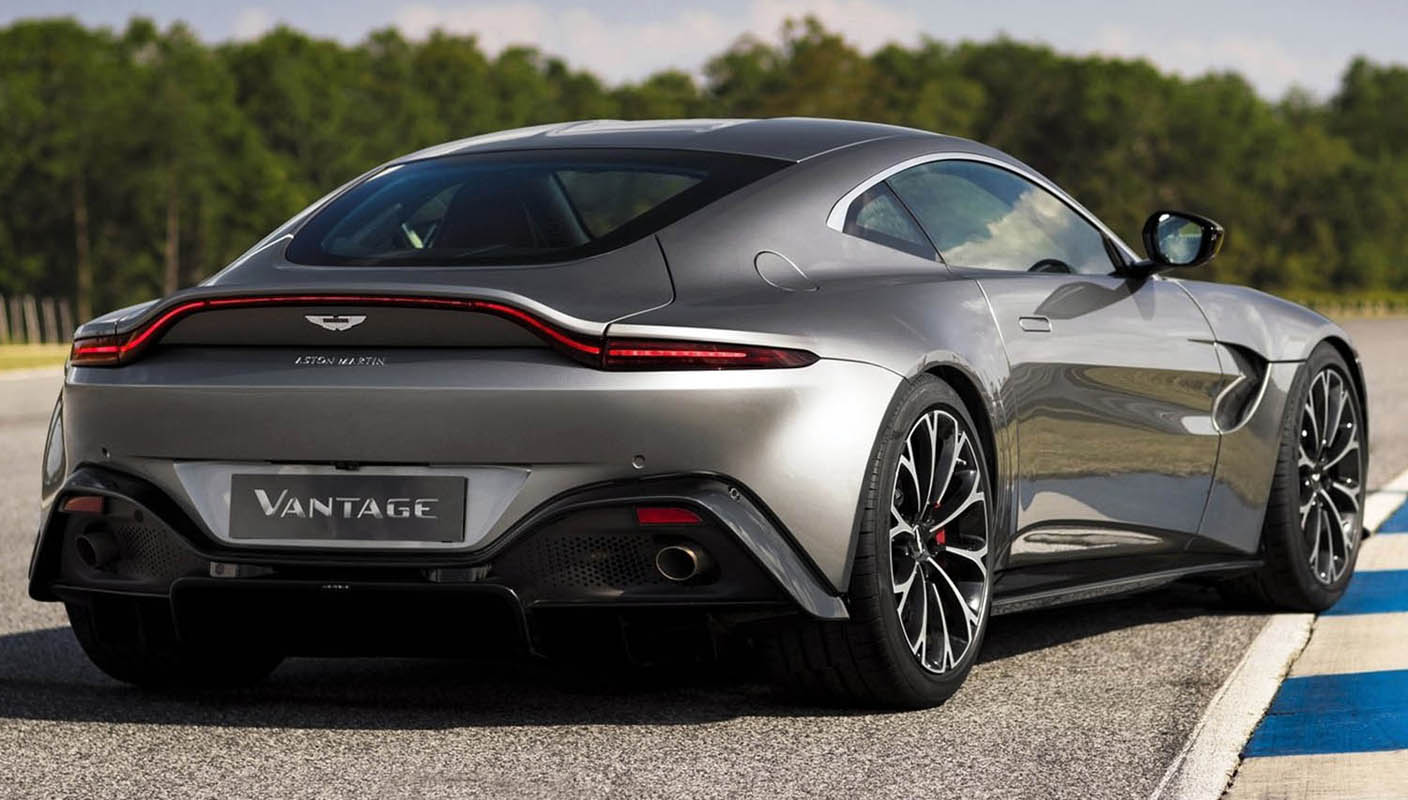
The underframe features a solidly-mounted sub frame which creates an immensely rigid structure providing a very stable platform from which the suspension can control the car. This structure ensures that the driver feels very much a part of the car, creating a feeling of ‘direct connection’ that can be felt and appreciated by all drivers and relished by the most skilled.
The new Aston Martin Vantage utilises a high performance 4-litre V8 Twin Turbo engine, generating an output of 510PS. The basis of this engine has been provided by Mercedes-AMG as part of the company’s successful ongoing relationship. Aston Martin Engineers have worked to ensure that this engine maintains the unique AML character and ‘feel’ that Aston Martins are renowned for.
Moving to a twin-turbo V8 from a naturally aspirated V8 could have resulted in the new Aston Martin Vantage lacking the soundtrack for which Aston Martins are rightly renowned. However, , engineers have successfully tuned both the induction and exhaust systems to provide the iconic sound quality synonymous with an Aston Martin sports car. This is particularly noticeable in Sport Plus and Track modes.
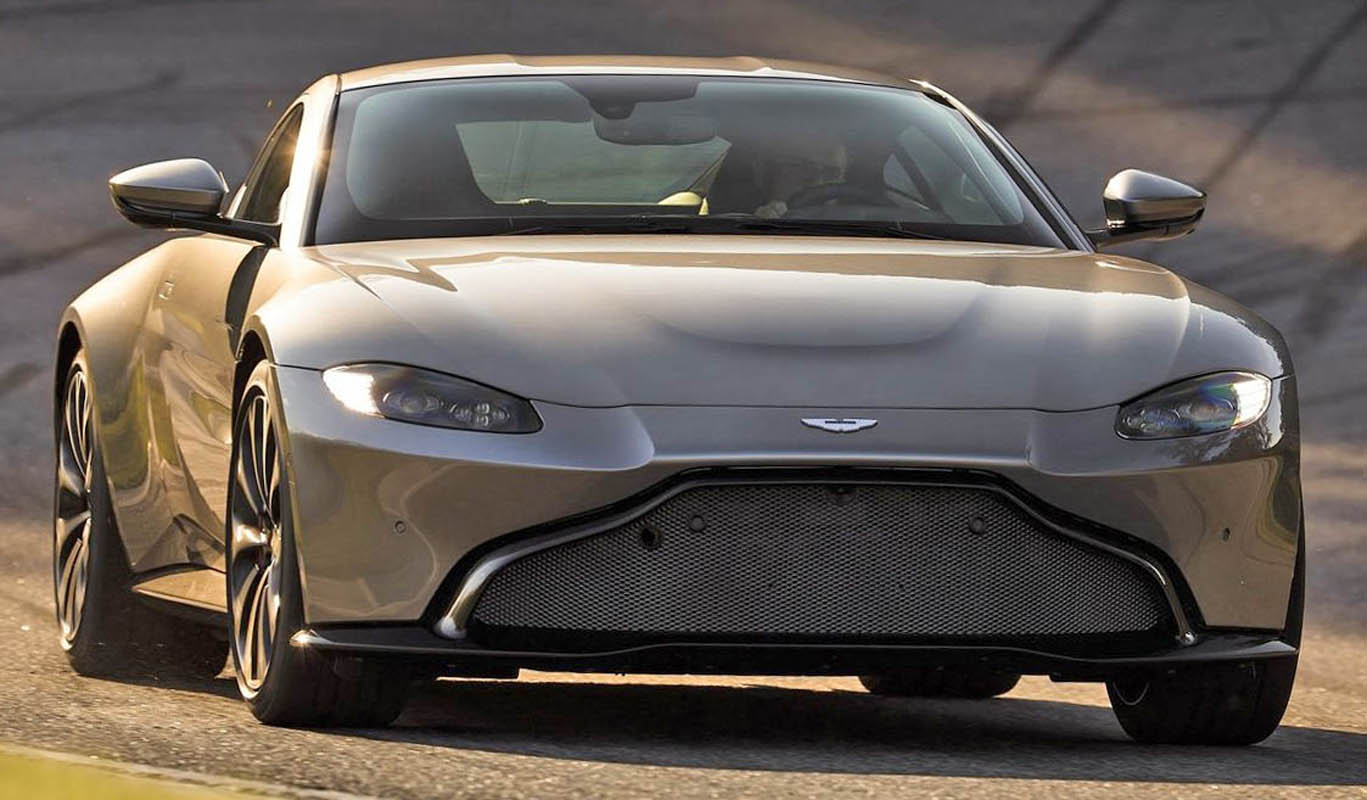
Great effort has also been put into positioning the engine as low as possible for a lower centre of gravity and improved weight distribution to contribute to optimised driving dynamics. The low engine position is achieved through new engine mounts and a lower, slimmer wet sump. With this bespoke new wet sump design, AML have achieved an improved engine parasitic loss figure, which improves fuel economy.
The 685Nm of torque is fed through a ZF eight-speed automatic transmission mounted at the back of the car. The gearbox has specially developed software which provides short, crisp gear changes when required, and can also deliver the type of shift refinement and usability which is beyond that seen on dual clutch gearboxes.
By using eight gears, this enables close ratios, which allow the engine to be kept in its most powerful / efficient speed range for longer depending on driver demand. The gearbox’s adaptive software is designed to gauge the conditions the car is operating in, along with the demands the driver is making, to ensure the car is in exactly the right gear at the right time.
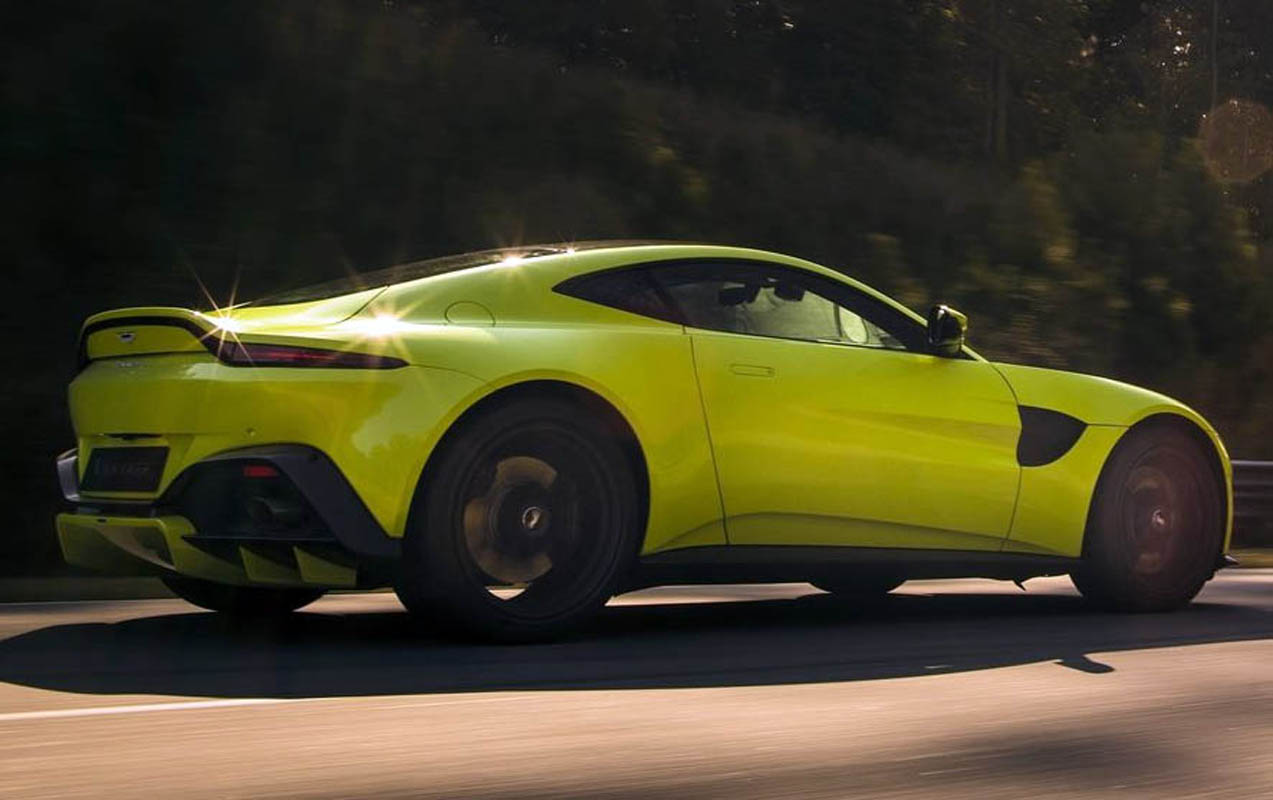
Aston Martin’s Chief Technical Officer, Max Szwaj said: “As an automotive engineer the challenge is always the same: to achieve greater efficiency in every area of the car. With an unashamed sports car such as an all-new Aston Martin Vantage you have another challenge – the relentless pursuit of greater emotion and excitement. Not only have we massively improved the hardware of this new Aston Martin Vantage, we’ve invested it with true heart and soul.”
Performance/Driving Dynamics
The dynamic brief for the new Vantage was simple. Make it as exciting and engaging as possible without compromising its everyday usability or making it too challenging for drivers of all abilities. The key to achieving this objective was complete integration of the powertrain, transmission, suspension and steering systems, which work in harmony to offer three distinct dynamic modes – Sport, Sport Plus and Track.
As the name of these modes suggests, the Vantage is never less than a sports car. Consequently, while ride comfort and pliancy remains an important quality, the Vantage is not attempting to deliver GT levels of suppleness. Precision, consistency and intuitive responses are constants, but as the driver works their way through Sport Plus and Track modes they will feel the whole car become increasingly responsive to their inputs. The throttle will feel sharper, the up and downshifts punchier and the steering more incisive and the suspension firmer.
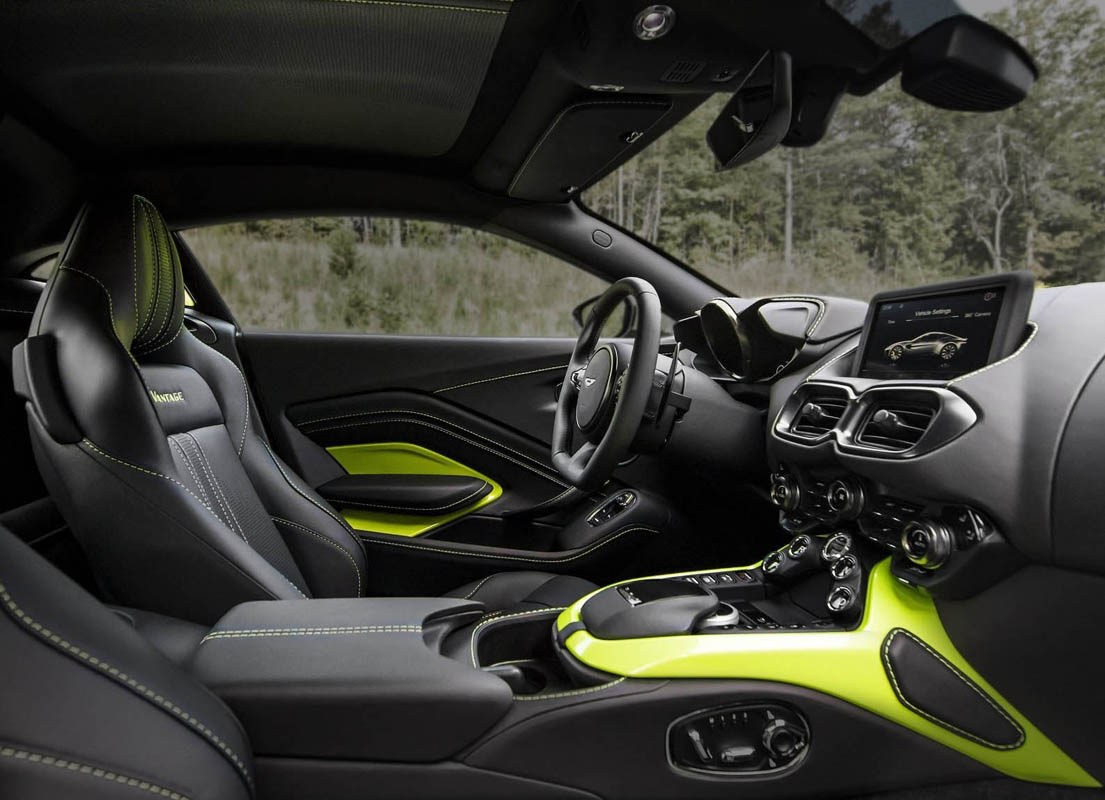
The suspension uses a forged double wishbone design at the front and a multi-link system at the rear. Adaptive damping features as standard, with sensors on the car detecting the prevailing driving conditions, as well as the demands the driver is making of the car. A solidly-mounted rear subframe provides the most precise and consistent location for the rear suspension, which means the car responds with greater immediacy and gives a more detailed feeling of connection for the driver.
A crucial addition to the new Aston Martin Vantage is Dynamic Torque Vectoring and – for the first time on an Aston Martin – an Electronic Rear Differential (E-Diff). This differential is linked to the car’s electronic stability control system, so it can understand the car’s behaviour, and can react accordingly to direct the engine’s power to the relevant wheel. Unlike a conventional LSD, it can go from fully open to 100% locked in a matter of milliseconds. DTV significantly improves the car’s cornering capabilities and makes low to medium speed cornering far more satisfying.
At higher speeds the Electronic Differential’s speed and sensitivity of response enables the system to take very fine control of the car’s dynamic behaviour. Also, because the E-Diff is free from the fixed parameters and behaviour of a mechanical LSD it creates an inherent feeling of agility when making direction changes, but feels much more composed both in terms of its straight-line stability and once settled into a cornering. Working together the E-Diff and DTV systems increase cornering performance and provide the driver with increased levels of confidence, allowing them to explore and enjoy the car’s capabilities to the full, while not sacrificing low speed usability. Performance between the corners is equally scintillating, with a maximum speed of 195mph and the ability to hit 62mph from rest in just 3.7 seconds.
The braking system features ventilated two-piece 400mm cast-iron discs at the front, with ventilated 360mm discs at the rear, gripped by 6-piston front and 4-piston rear calipers. The master cylinder and booster have been updated to ensure the Vantage feels and responds as a true sports car, creating a more responsive, confidence inspiring drive.
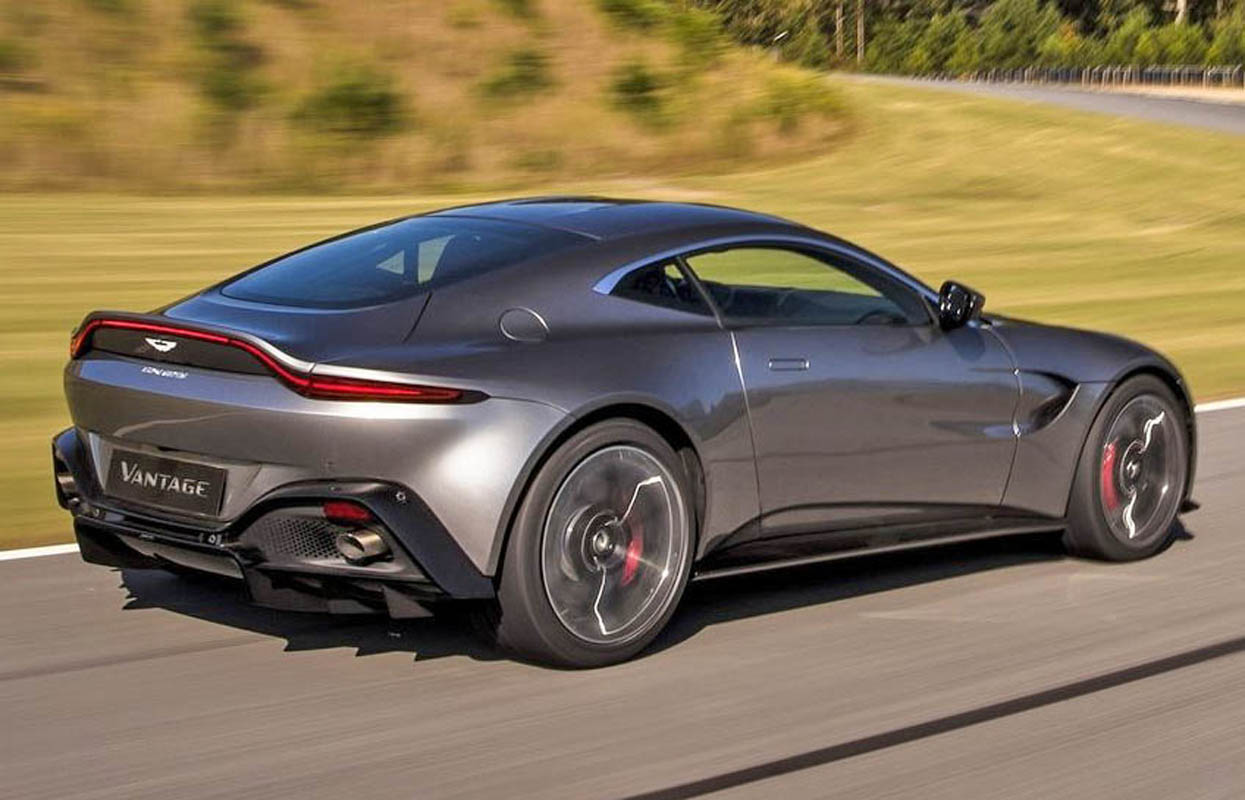
The wheels are 20″ as standard with a choice of 2 wheel styles: 20″ cast wheel designed to amplify the cars athletic stance and a 20″ forged machined lightweight wheel designed to
enhance the dynamic experience and reduce mass. The tyres are Pirelli P Zero (255/40 at the front, 295 35 at the rear) which have been specifically tuned to suit the driving dynamics of Vantage in wet and dry conditions.
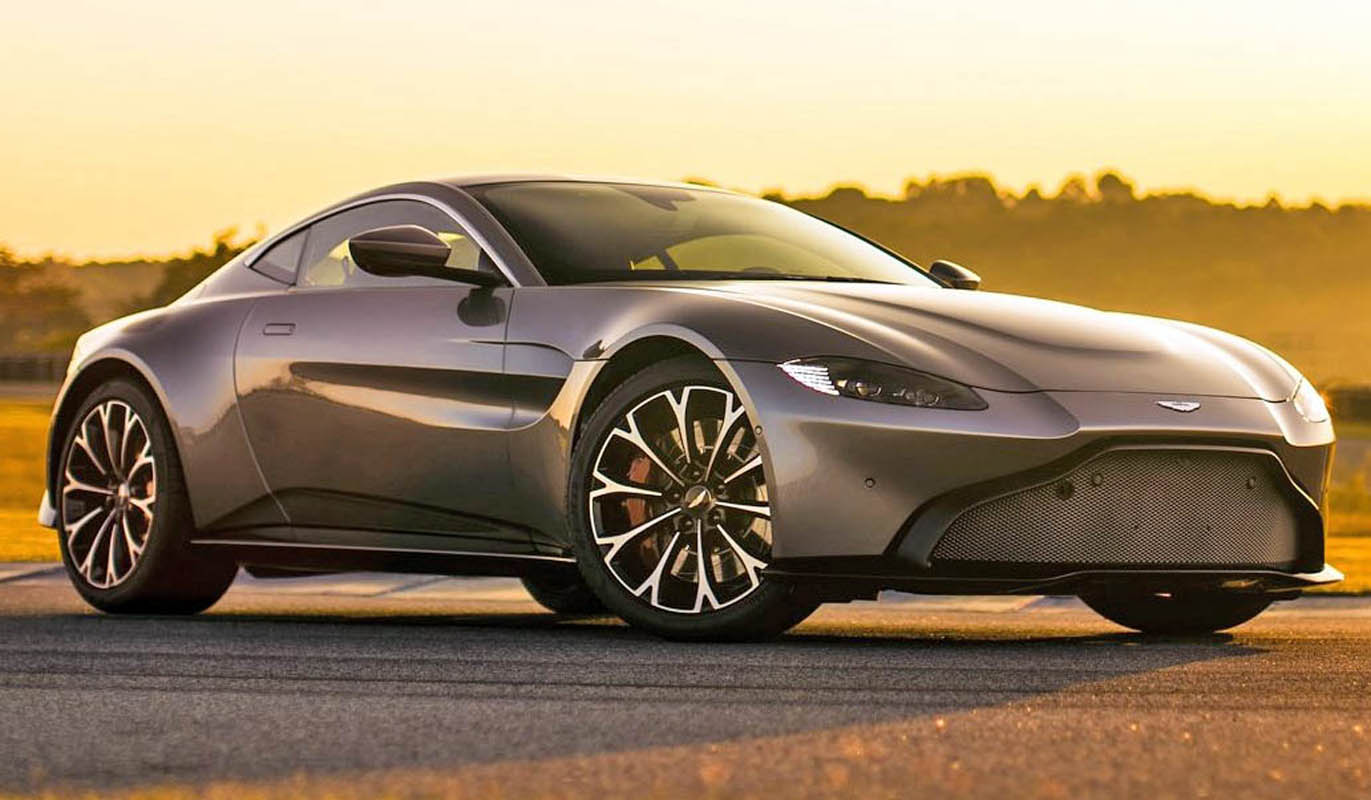
Chief of Vehicle Attribute Engineering, Matt Becker said: “With Vantage we’ve really ramped-up the feeling of agility, response and excitement. Key to this is the new Electronic Differential, which works with Dynamic Torque Vectoring and the car’s Dynamic Stability Control to make the car feel more responsive in slow and medium corners, but more stable in high-speed turns. We’ve put a huge amount of effort into the calibration of these electronic systems so the car feels natural and connected. It’s incredibly quick across the ground, but the speed doesn’t come at the expense of feel and enjoyment. It’s a proper driver’s car.”
Seven Decades of Sporting Excellence
The first time the Vantage name was used few could have imagined its future significance. Originally used in 1951 in sales literature for a high-performance derivative of the DB2, the Vantage engine – offering 125bhp against 105 for the standard model – was far from a standalone model, but established the name as one that would appeal to the keenest drivers.
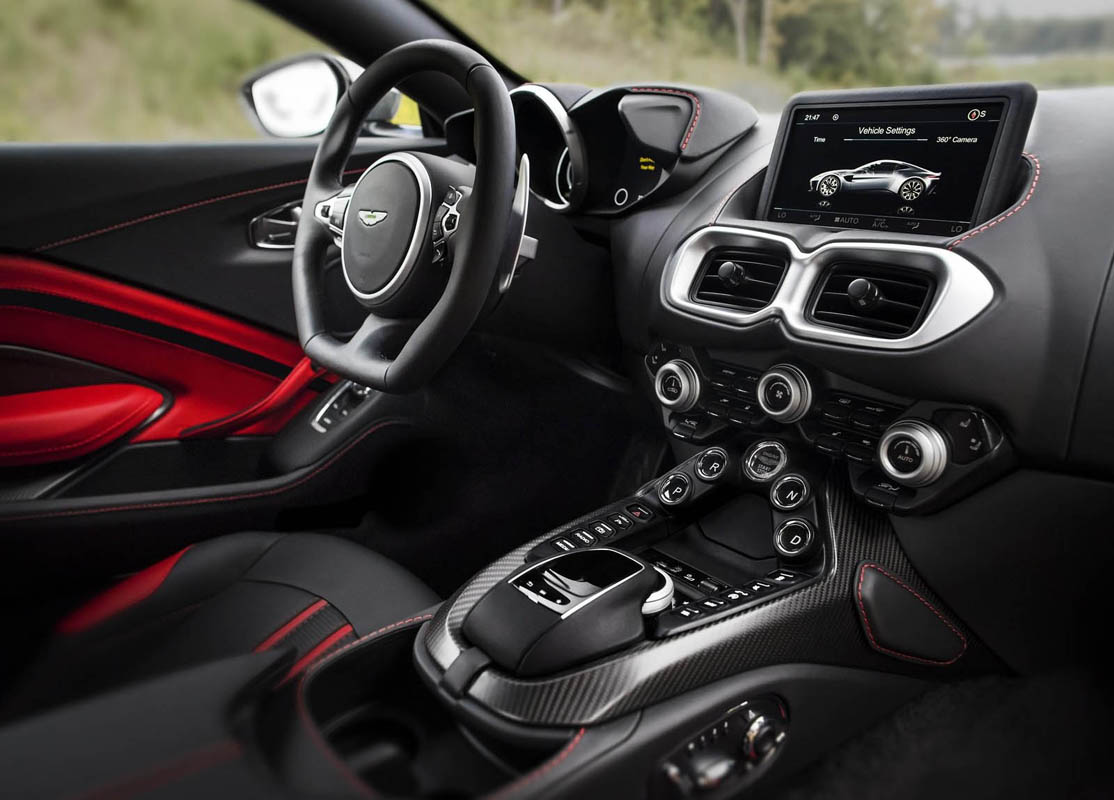
The Vantage name next used in 1962 to denote a distinct model was the DB4 Vantage. In addition to a high-performance engine, these Vantage specification cars also featured subtle styling modifications. With the introduction of the DB5 in 1964 the Vantage model became firmly established as the high-performance derivative. They were visually distinguished by discreet Vantage badges attached to the side strakes on the front wings – a strategy that also applied to , the DB6, DB6 Mk2 and DBS.
The first standalone Vantage model was the short-lived AM Vantage – in essence a re-styled DBS Vantage with a 4.0-litre 6-cylinder engine. Produced for a little over a year between the spring of 1972 and 1973, it was sold alongside the new William Towns-designed AM V8. Though just 70 examples were built, it was to spawn a true icon in the shape of the V8 Vantage. Introduced in 1977 as Aston Martin’s performance flagship, it was defined by its muscular looks and immense performance courtesy of a tuned 375bhp version of the 5.3-litre V8. One of the fastest and most desirable cars of its day, the V8 Vantage would ultimately spawn Volante and Zagato versions before it ceased production.
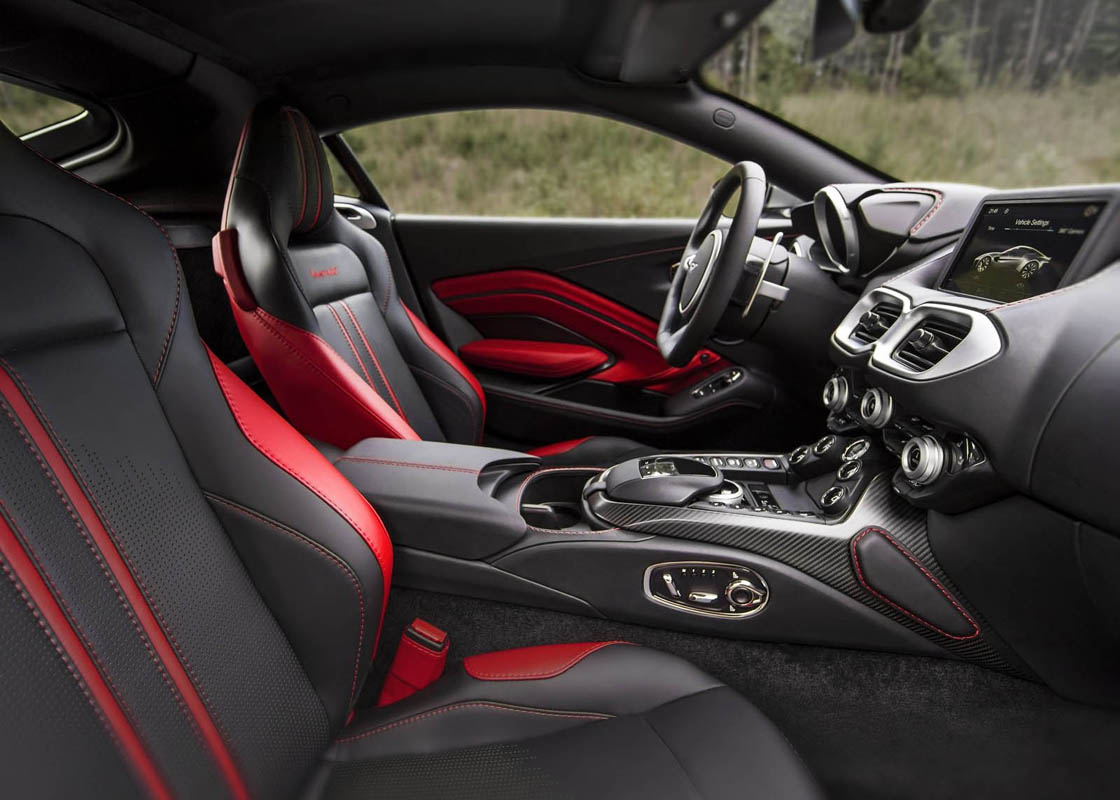
By now firmly established as the quintessential British supercar, the next Vantage was a magnificently brutal evolution of the V8-engined Virage Coupe. With uprated brakes and suspension and a pair of superchargers attached to the hand-built V8, this new Aston Martin Vantage was a 550bhp monster. Later developments saw power rise to 600bhp, with the final V600 Le Mans models amongst the rarest and most desirable Vantage models of all and the last Vantage model to be built at Newport Pagnell.
The DB7 Vantage of 2000 was a landmark car, as it introduced Aston Martin’s new 6.0-litre V12. A huge step up from the six-cylinder DB7, the Vantage was a true Ferrari rival. Available with manual and automatic transmission, and in Coupe or Volante body styles.
With the introduction of the all-new 2005 V8 Vantage, Aston Martin was to experience unprecedented levels of kudos and sales success. Built around the company’s innovative VH platform and using a strong, lightweight bonded aluminium chassis, this generation of Vantage would continually evolve. First with a large capacity V8 engine, followed by the introduction of an Automated Sequential Manual transmission. When a V12 Vantage was launched in 2009 it wowed enthusiasts around the world. Since then special series models such as the track-biased Aston Martin GT12 and GT8 models have continued to exploit a design with apparently limitless potential.
Now, with the introduction of the new Aston Martin Vantage a fresh chapter of this legendary model is about to begin.

